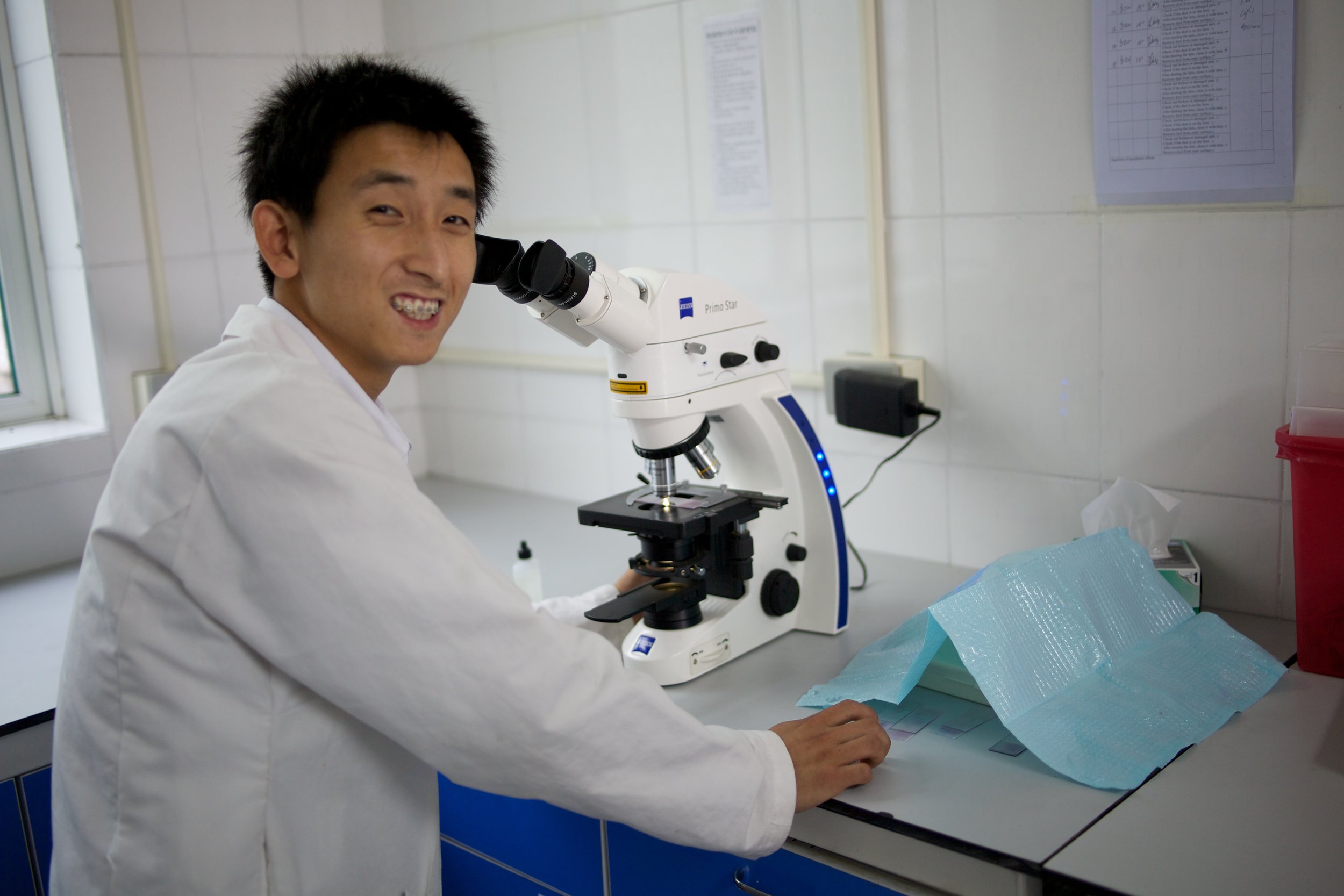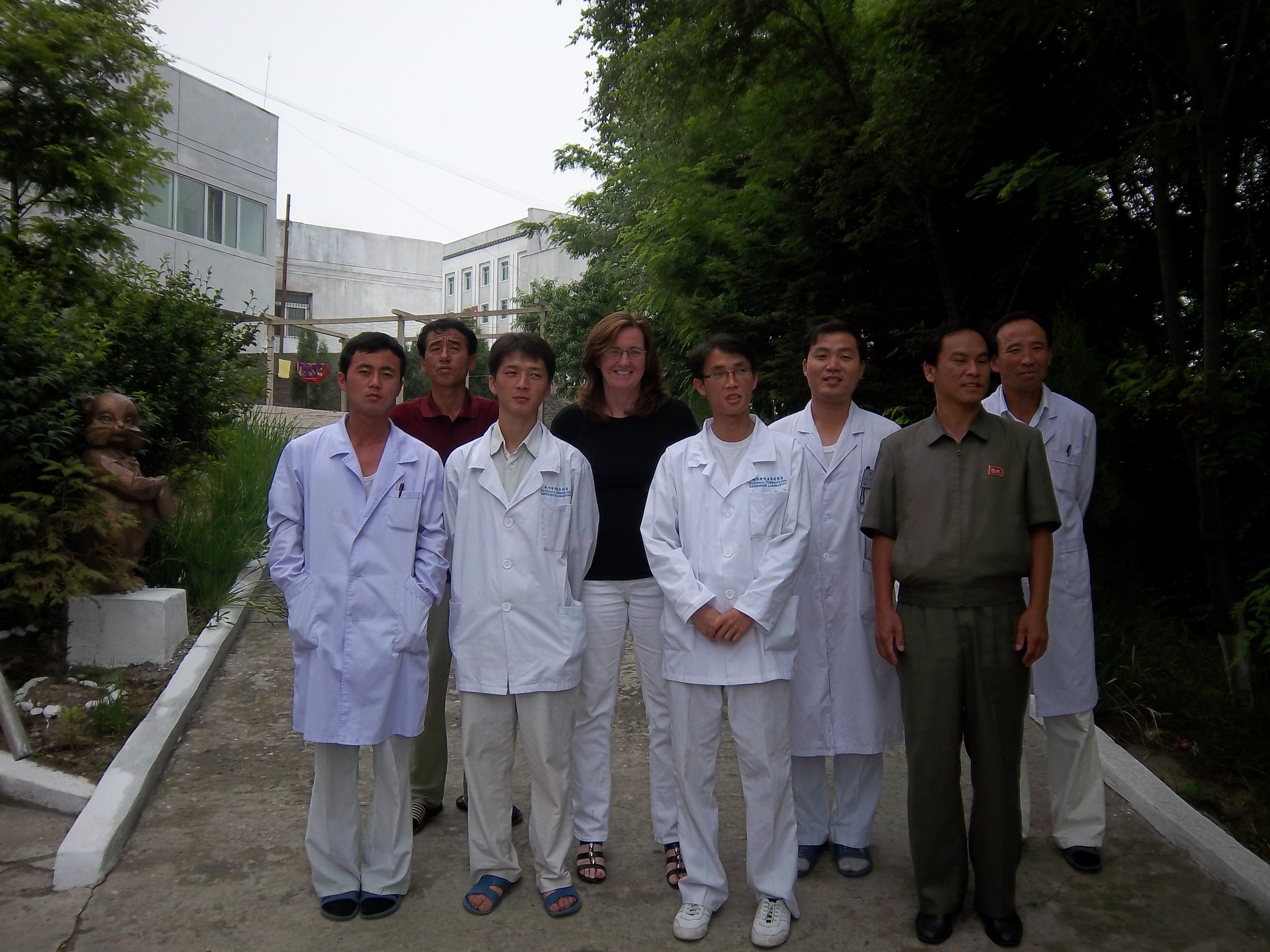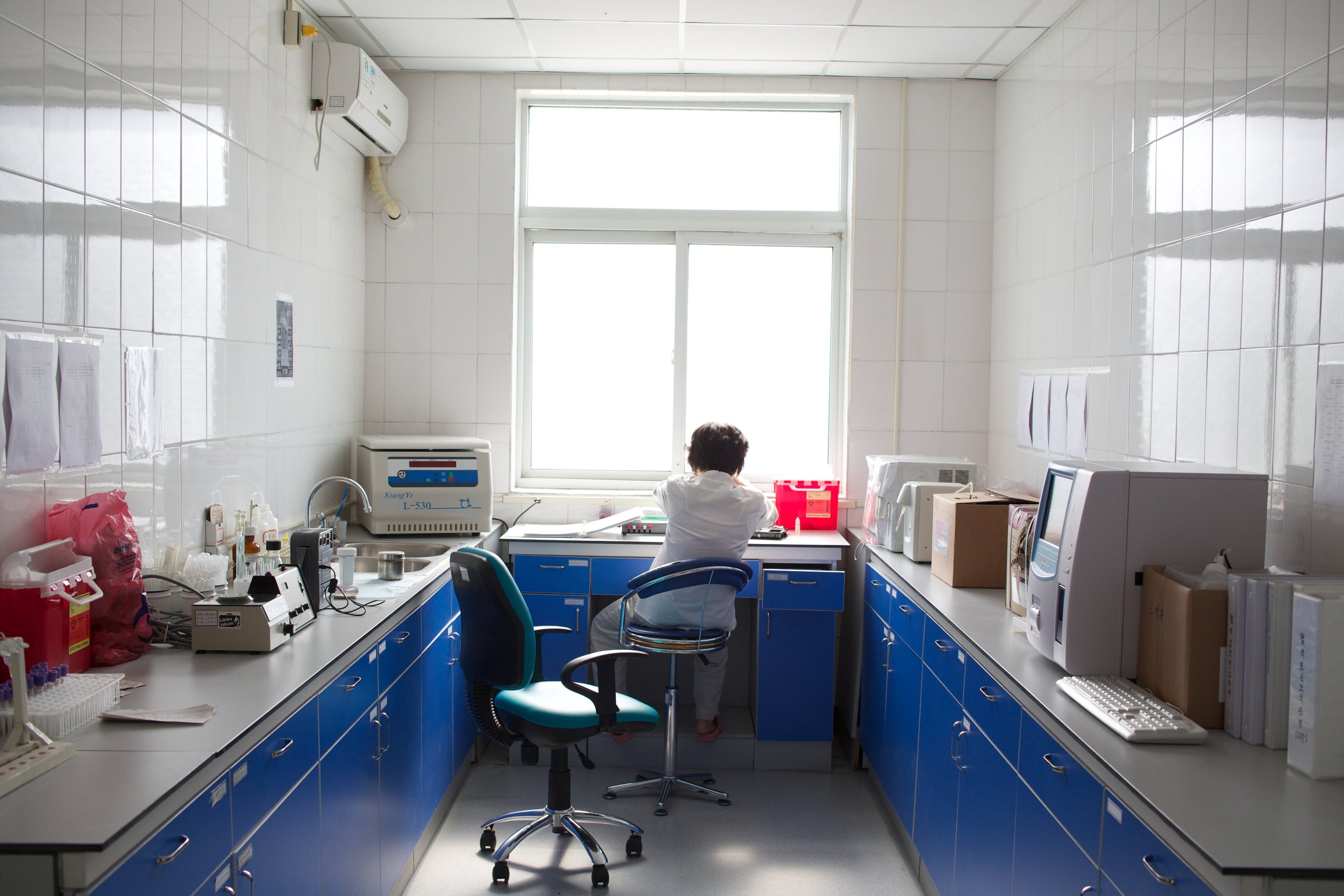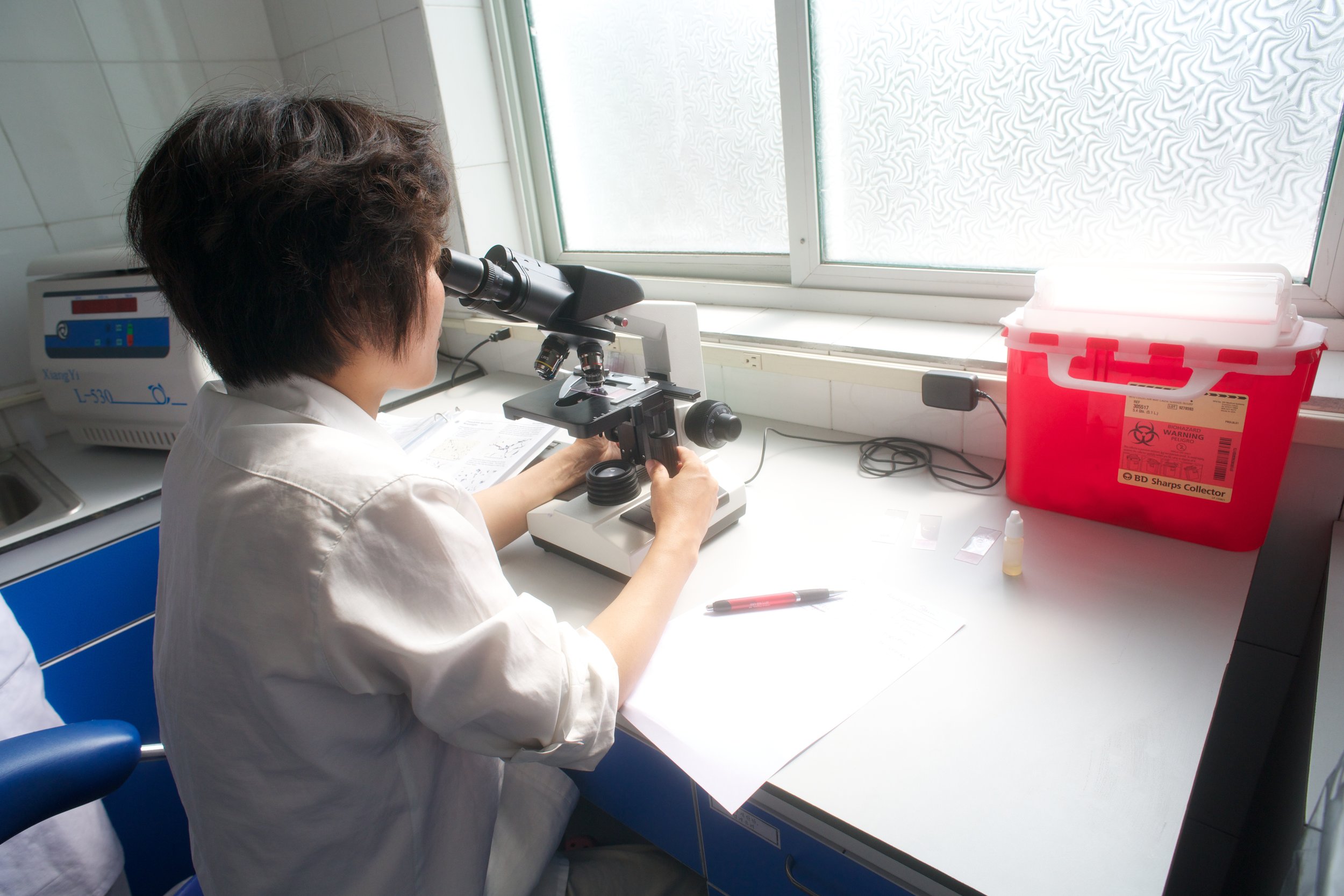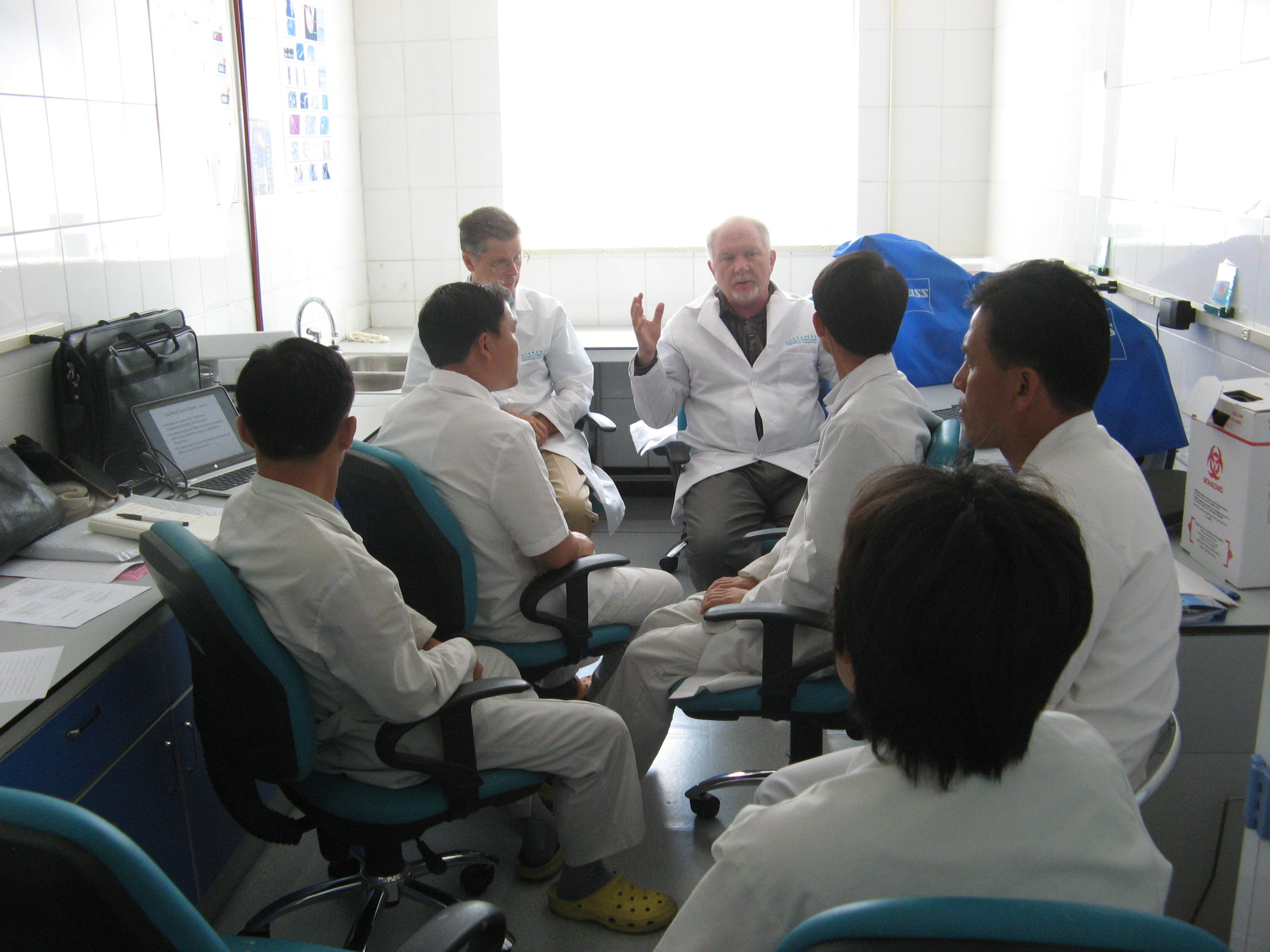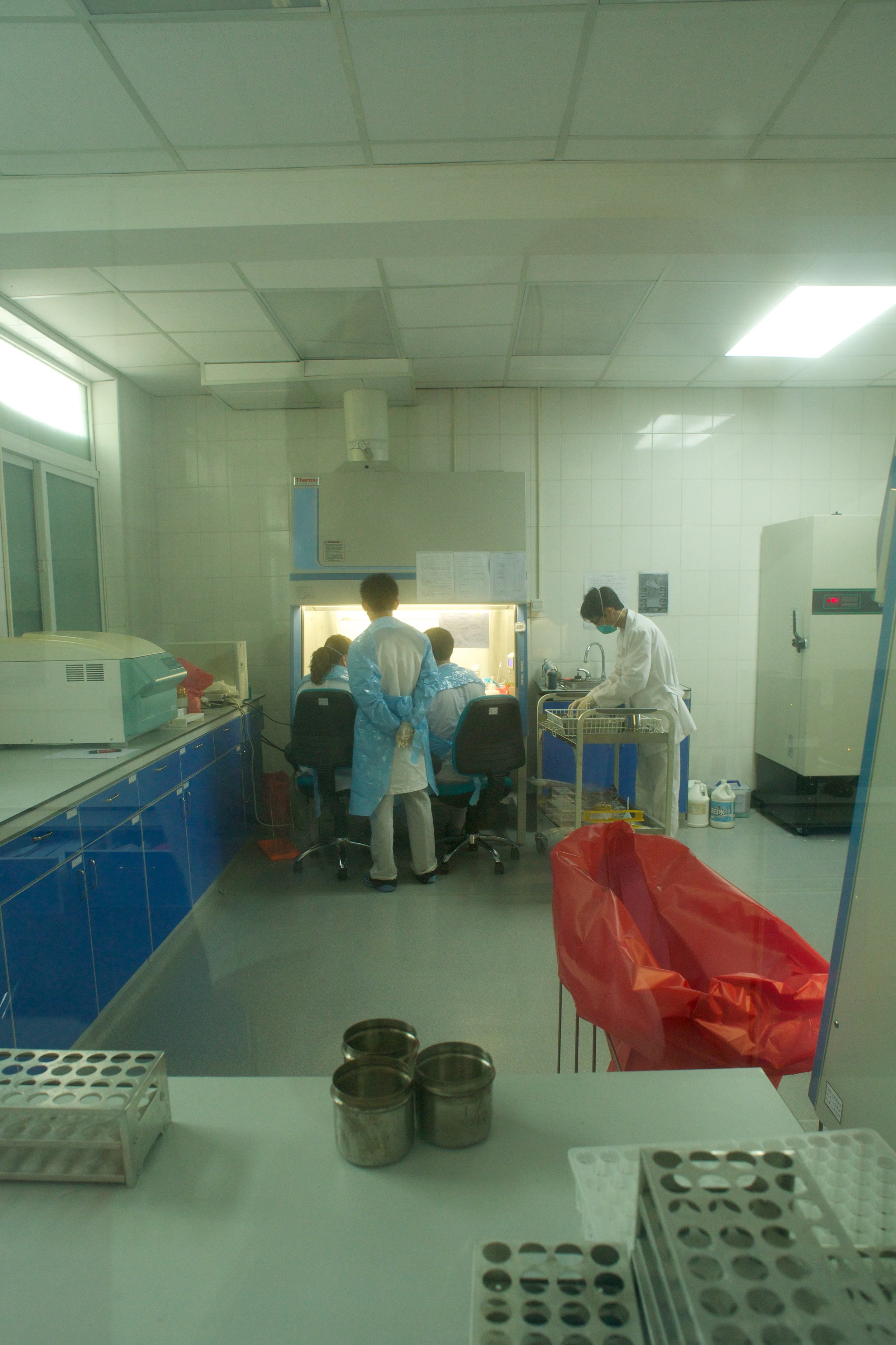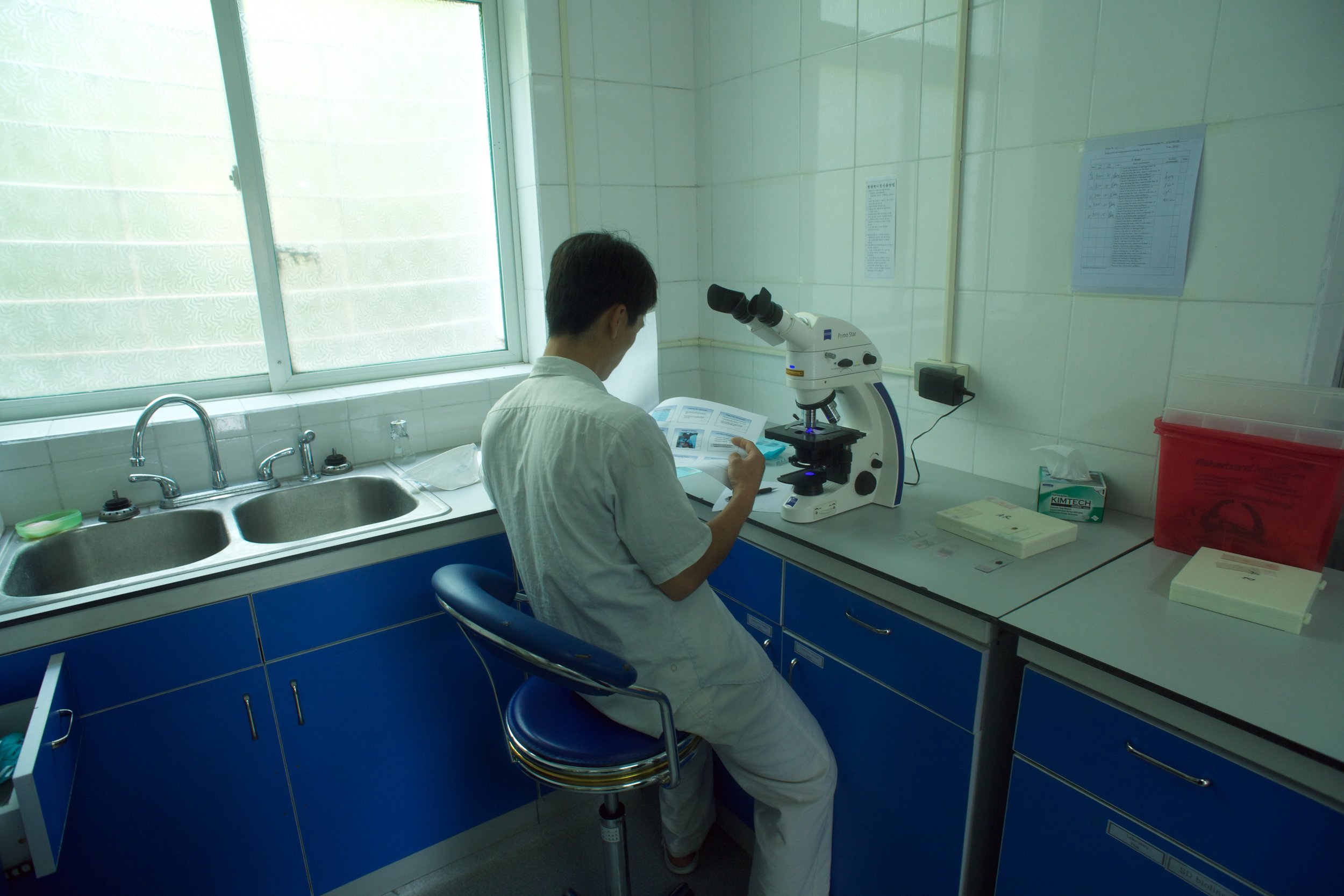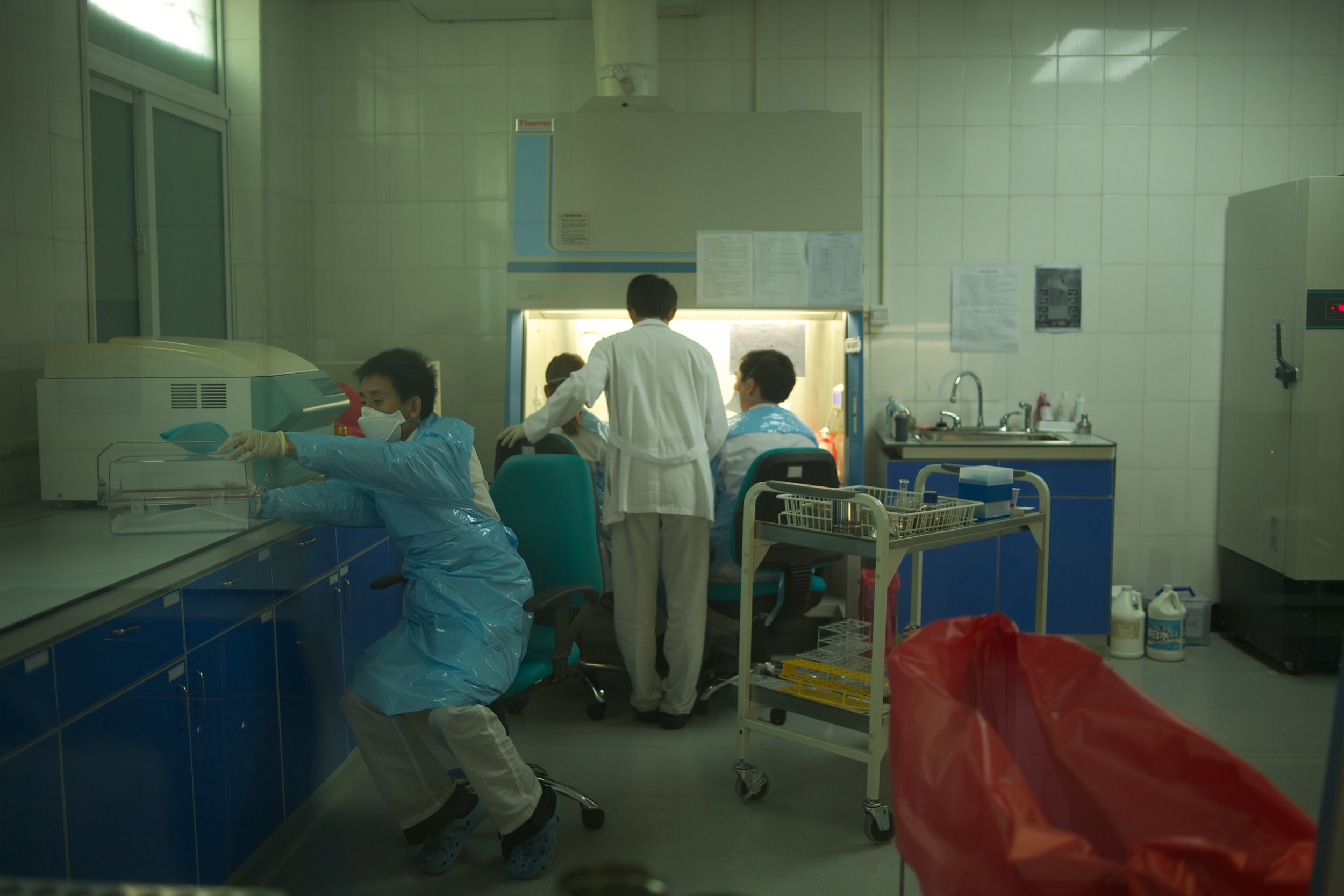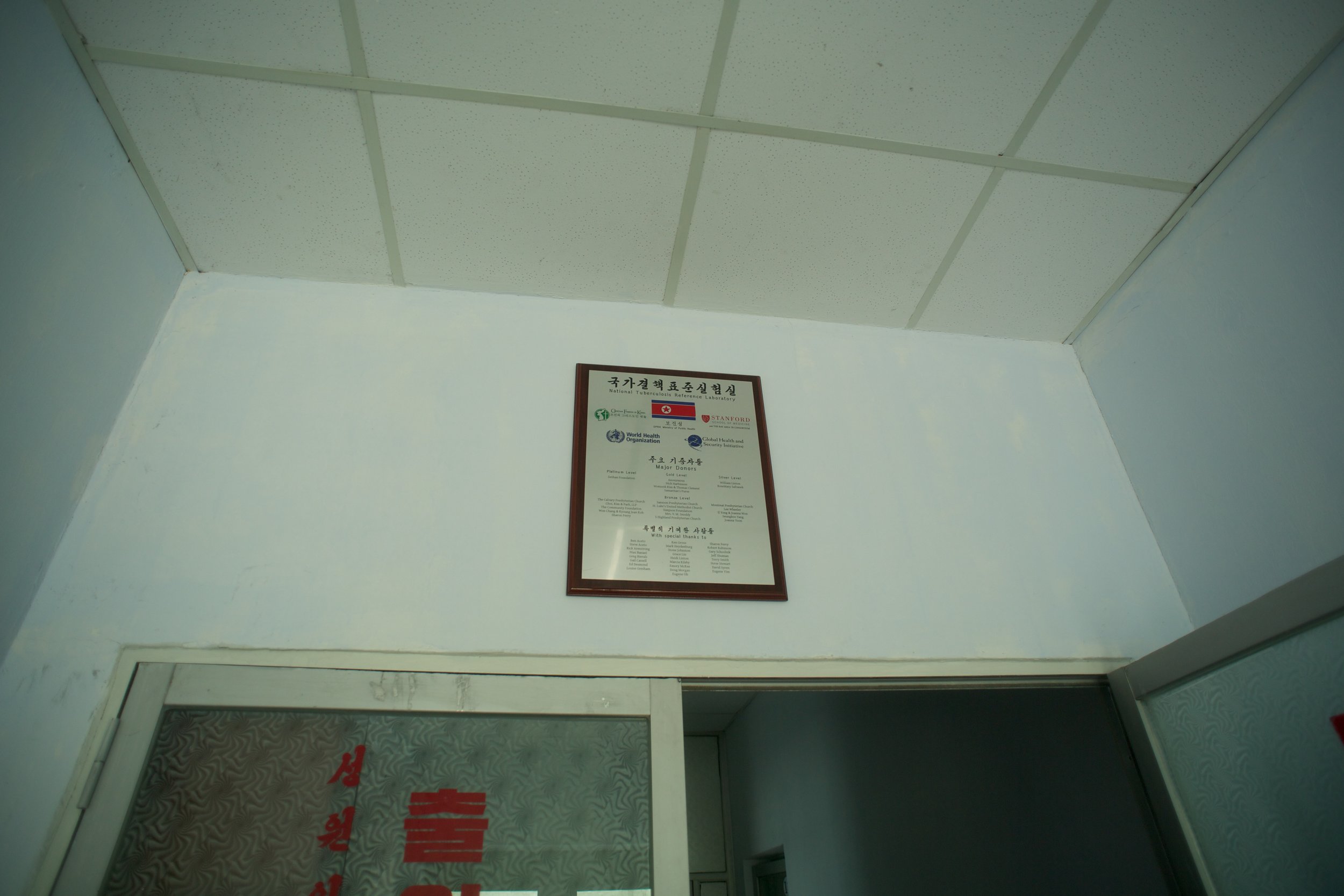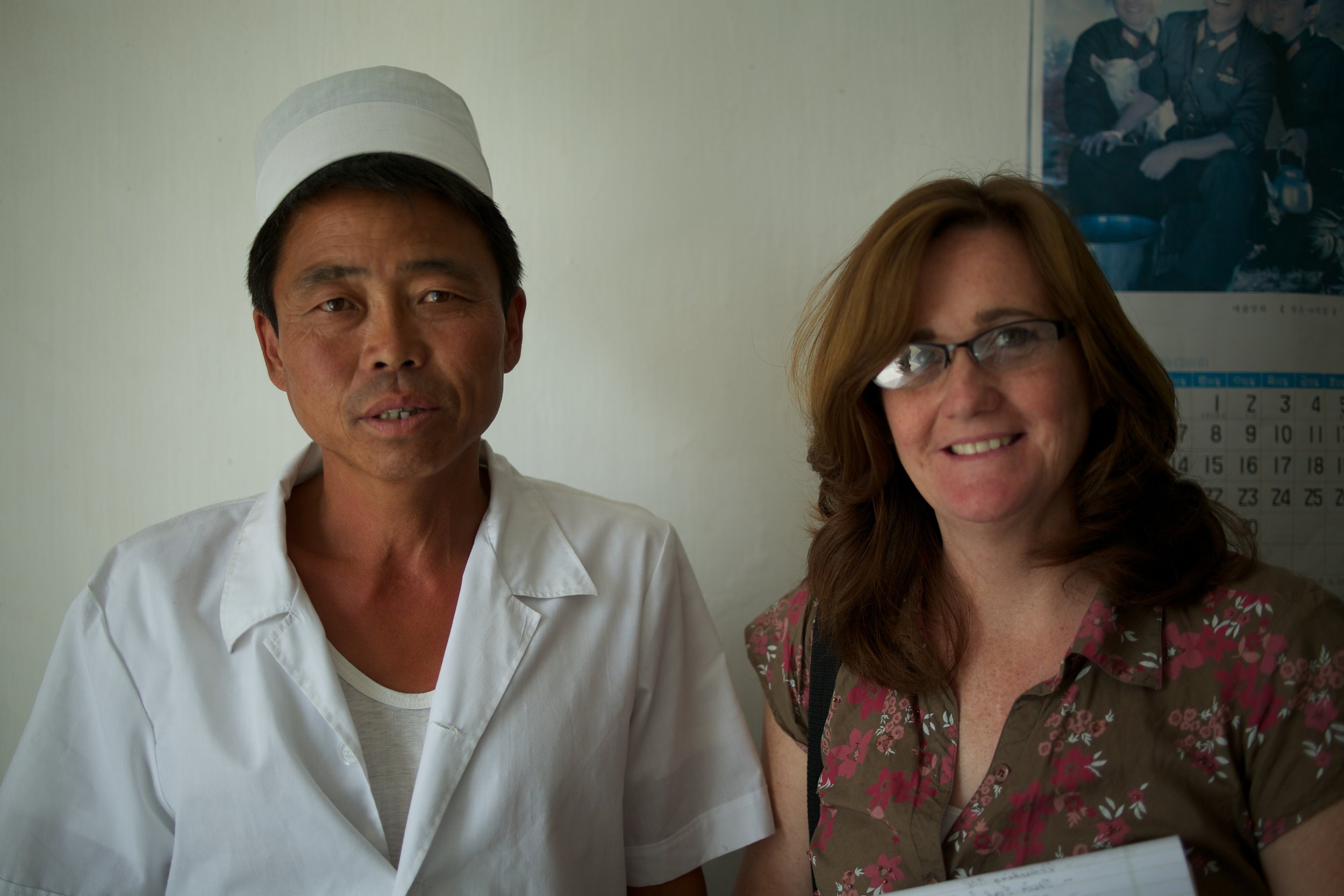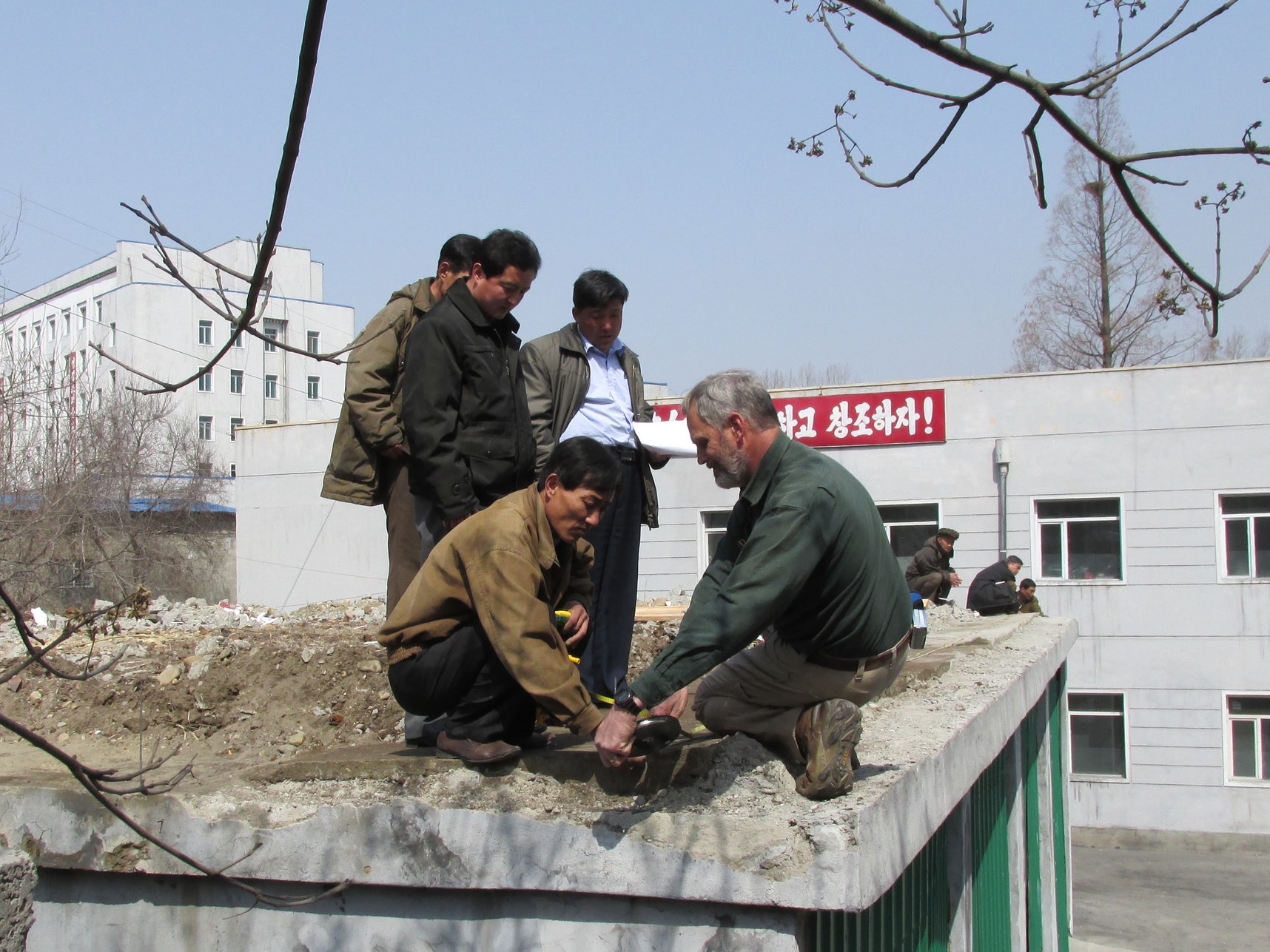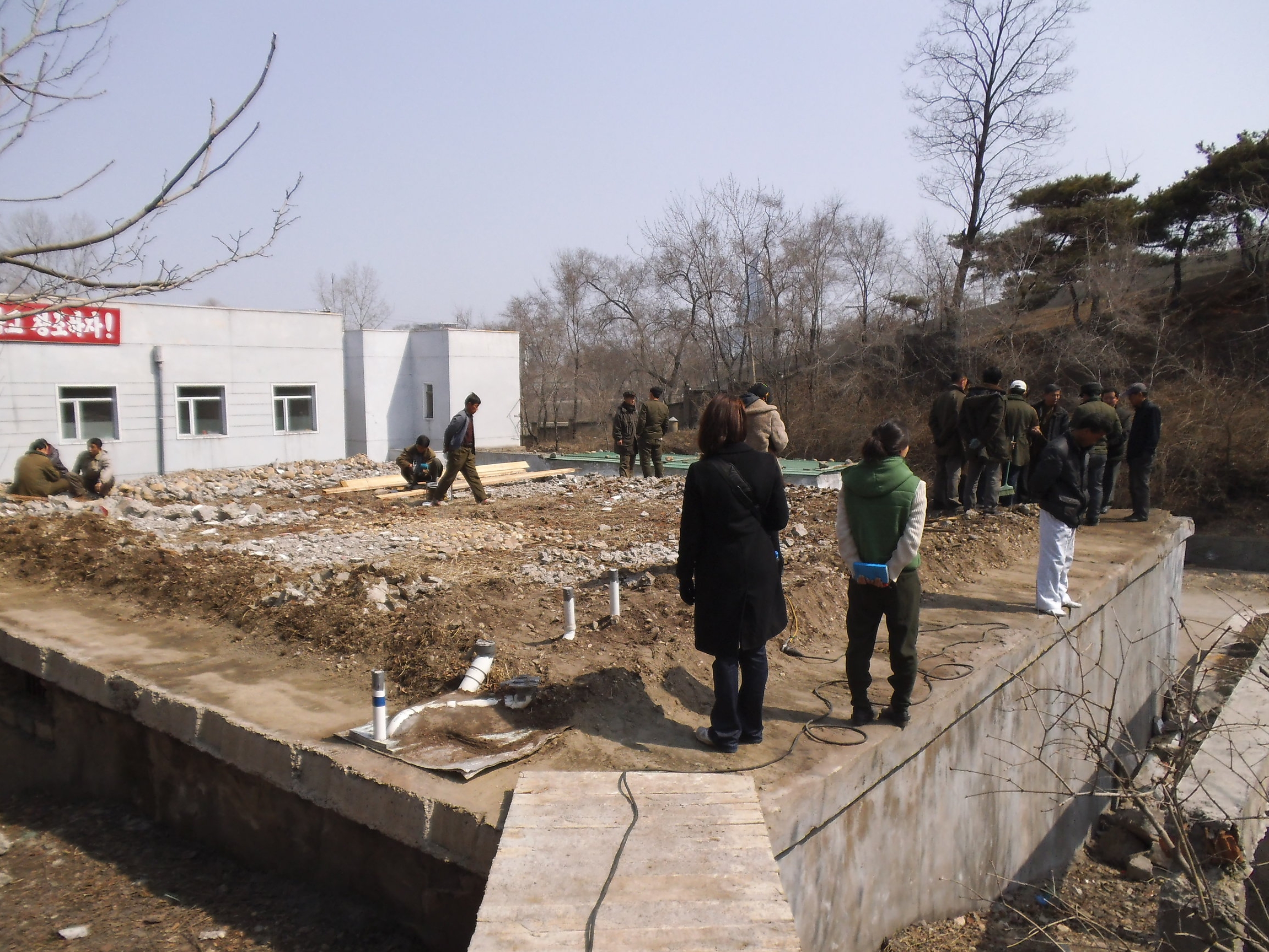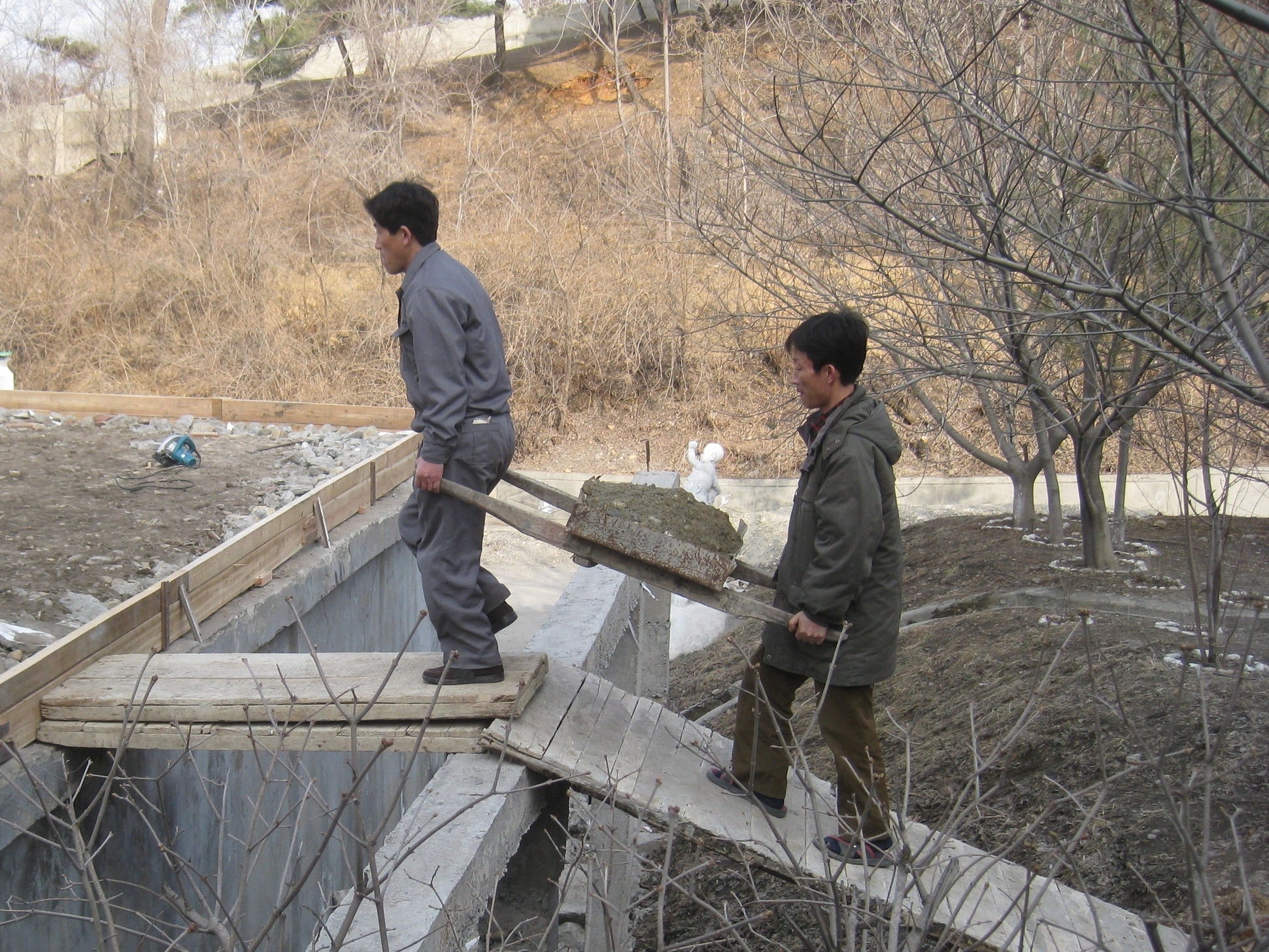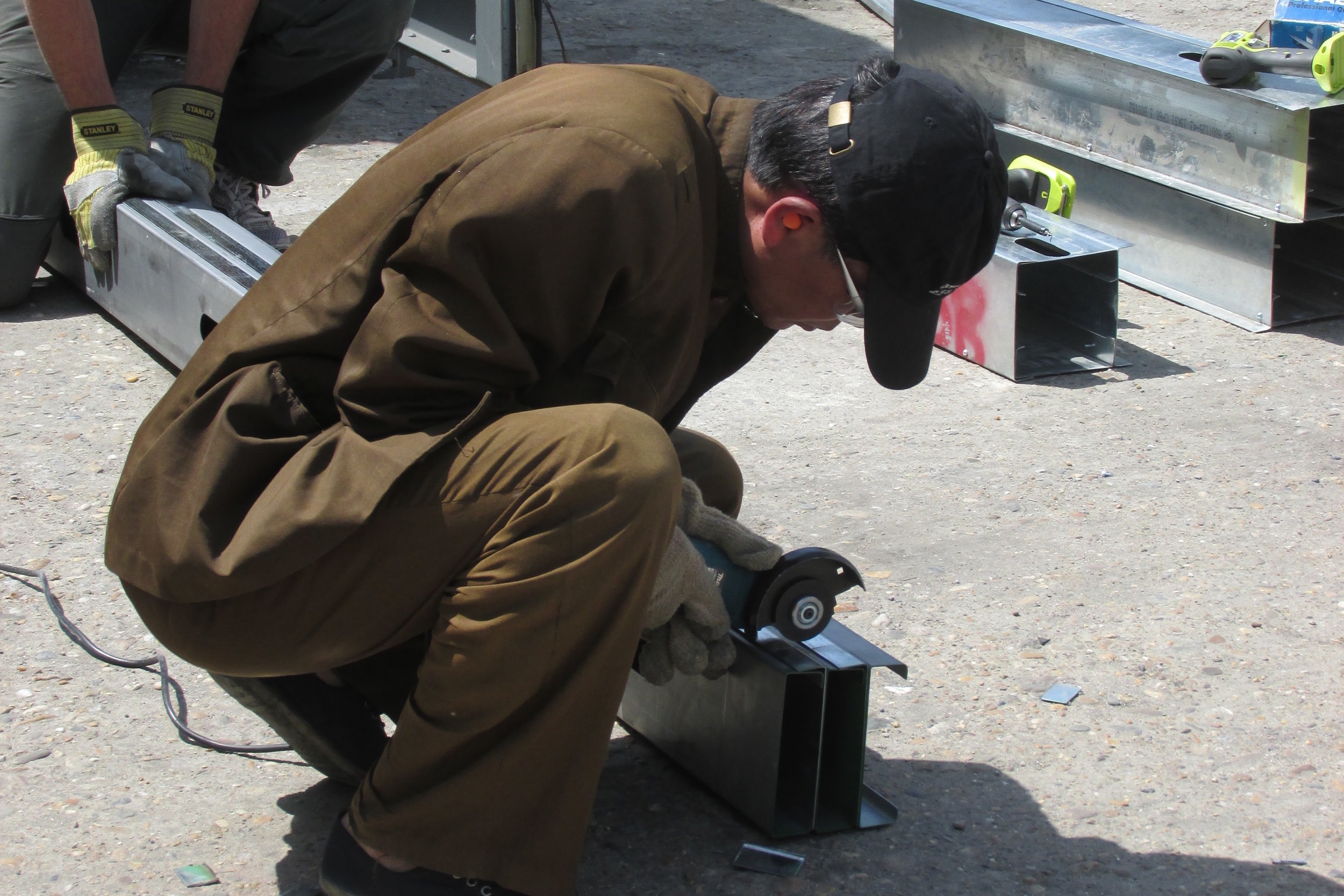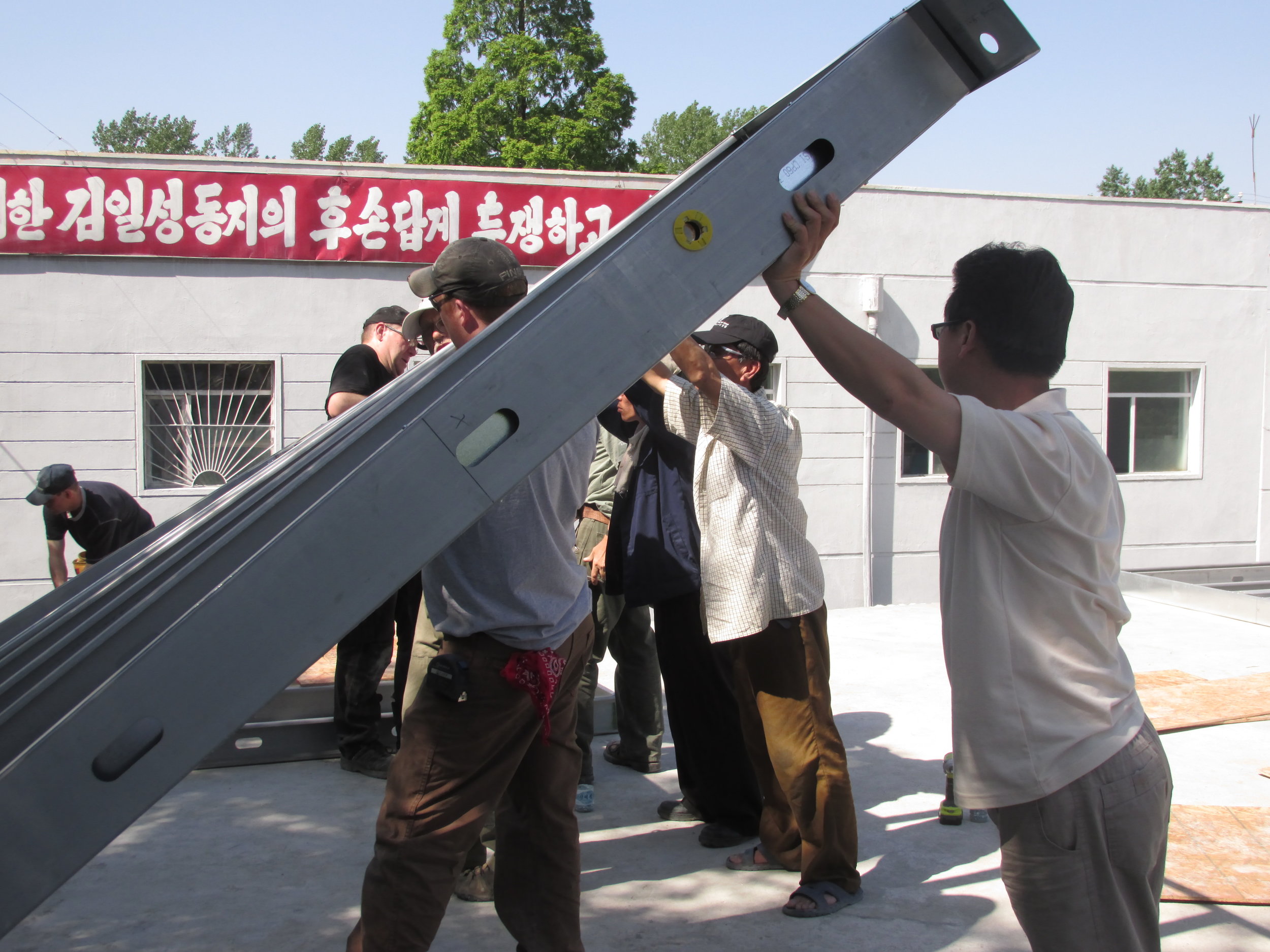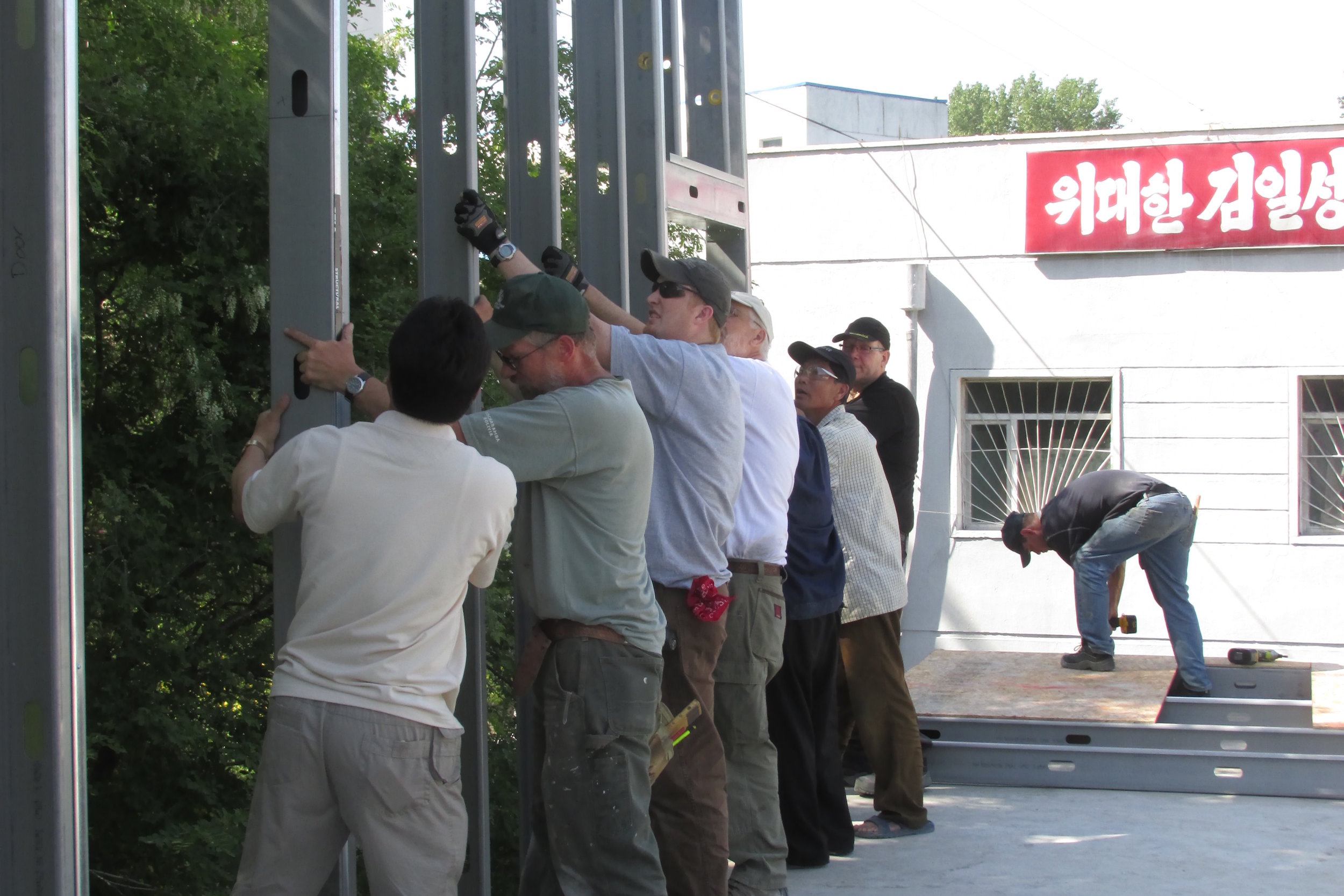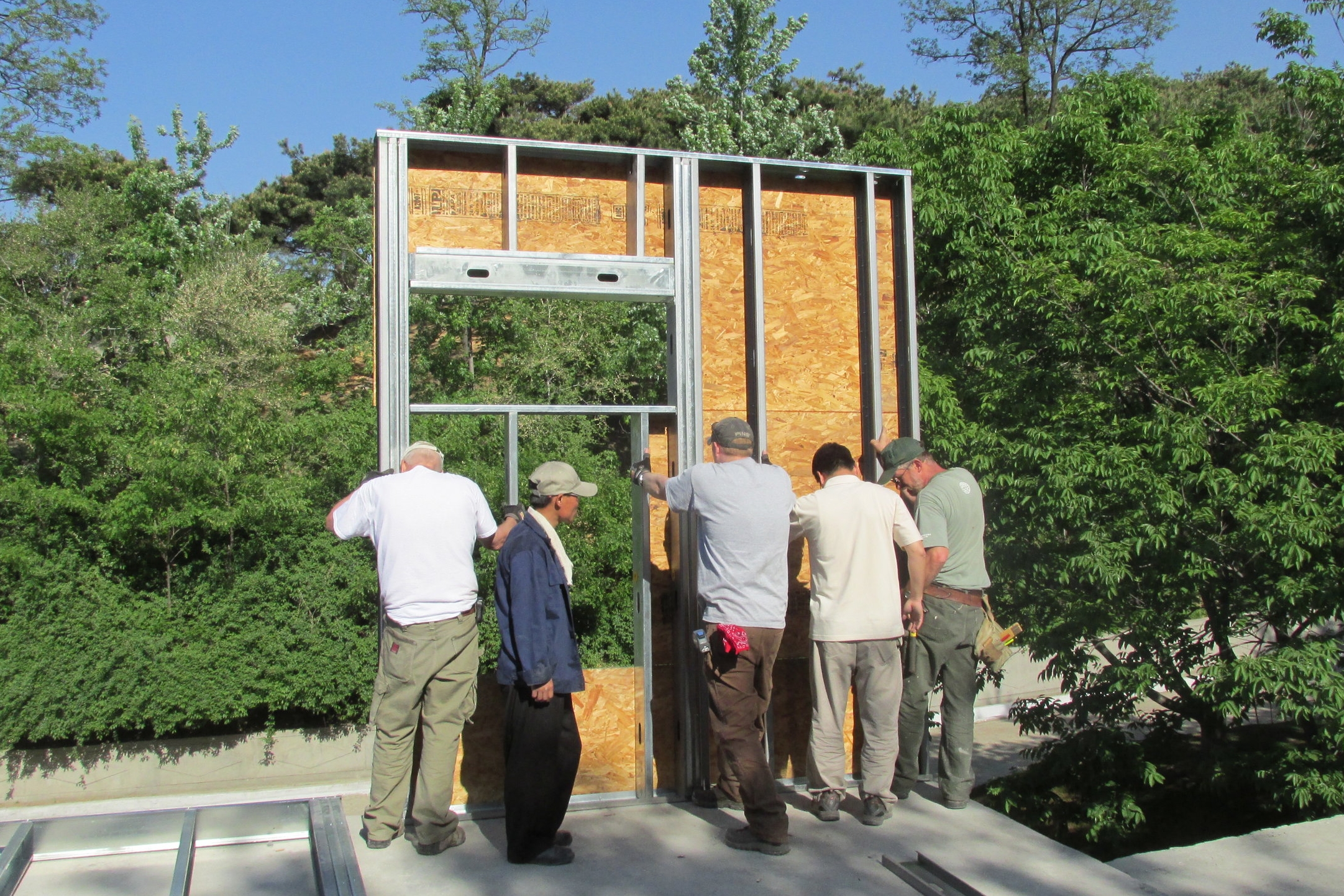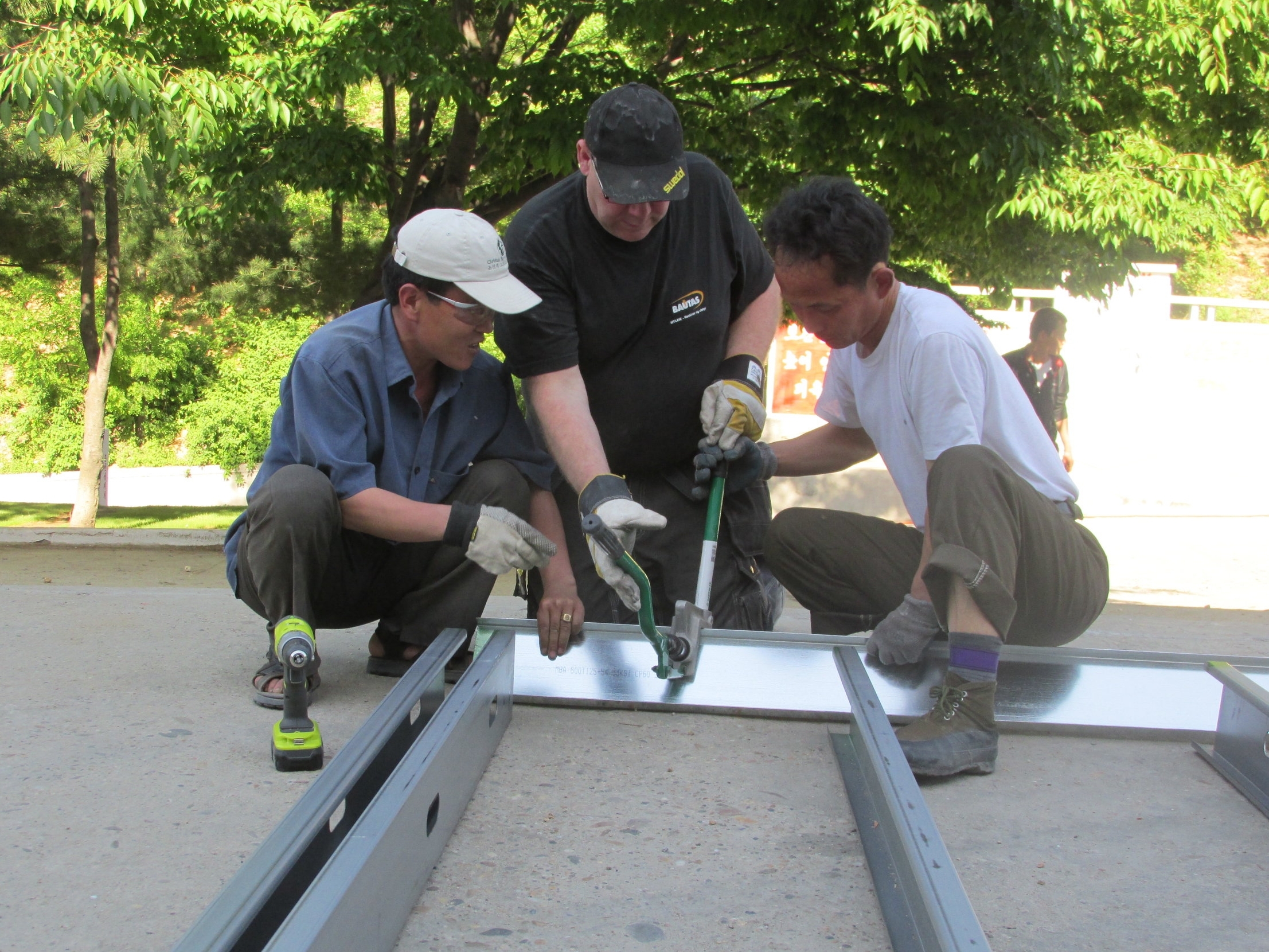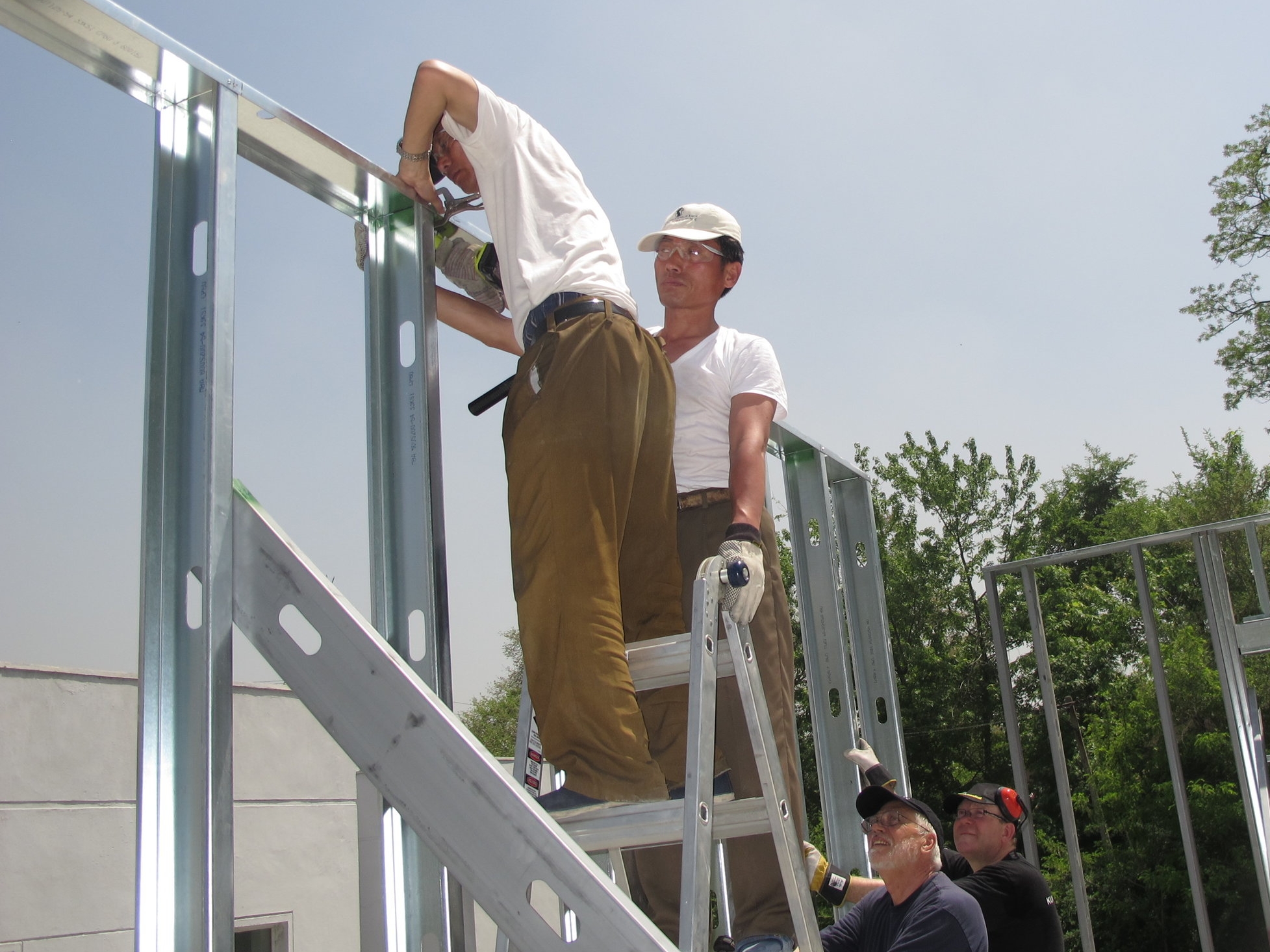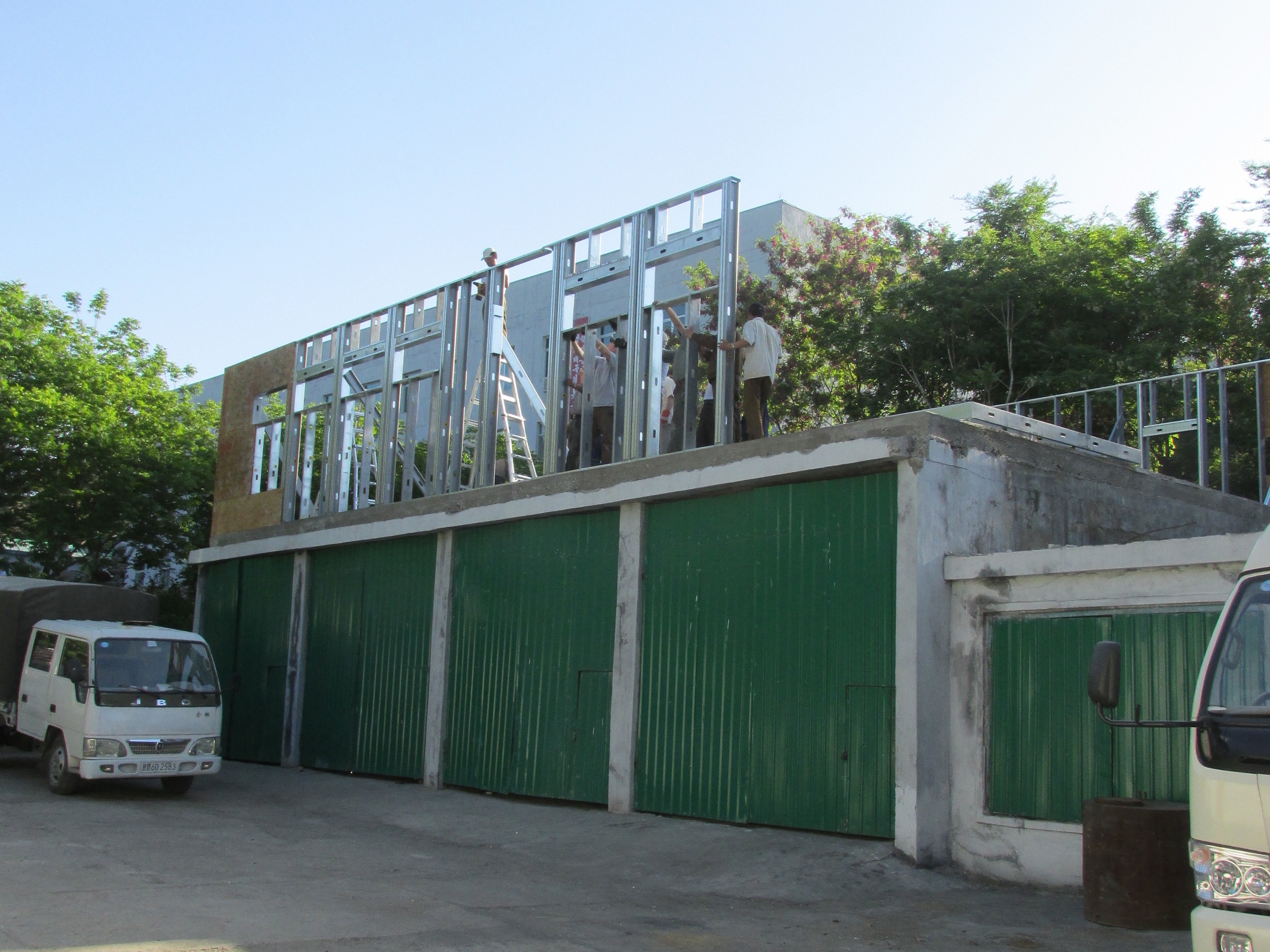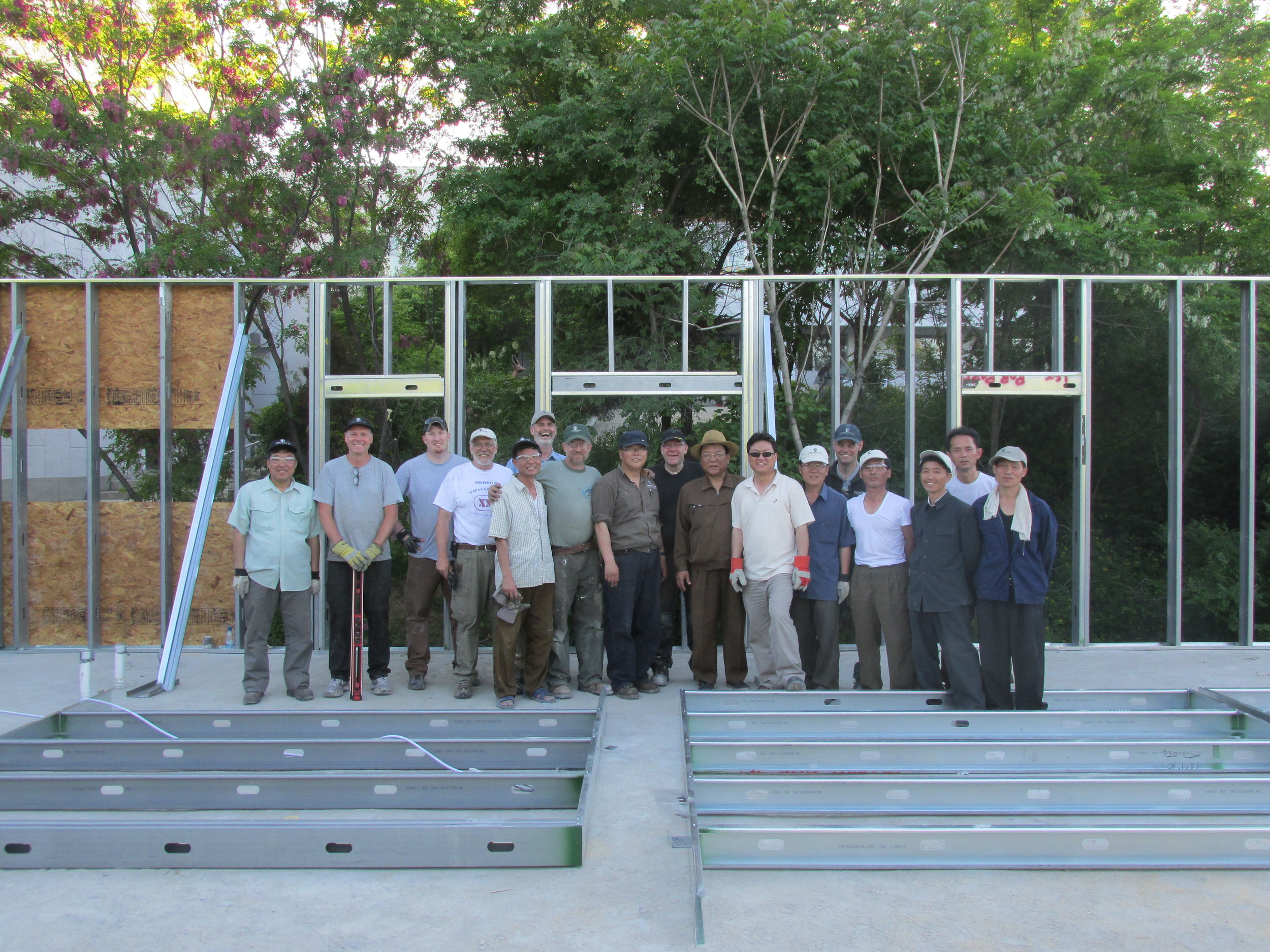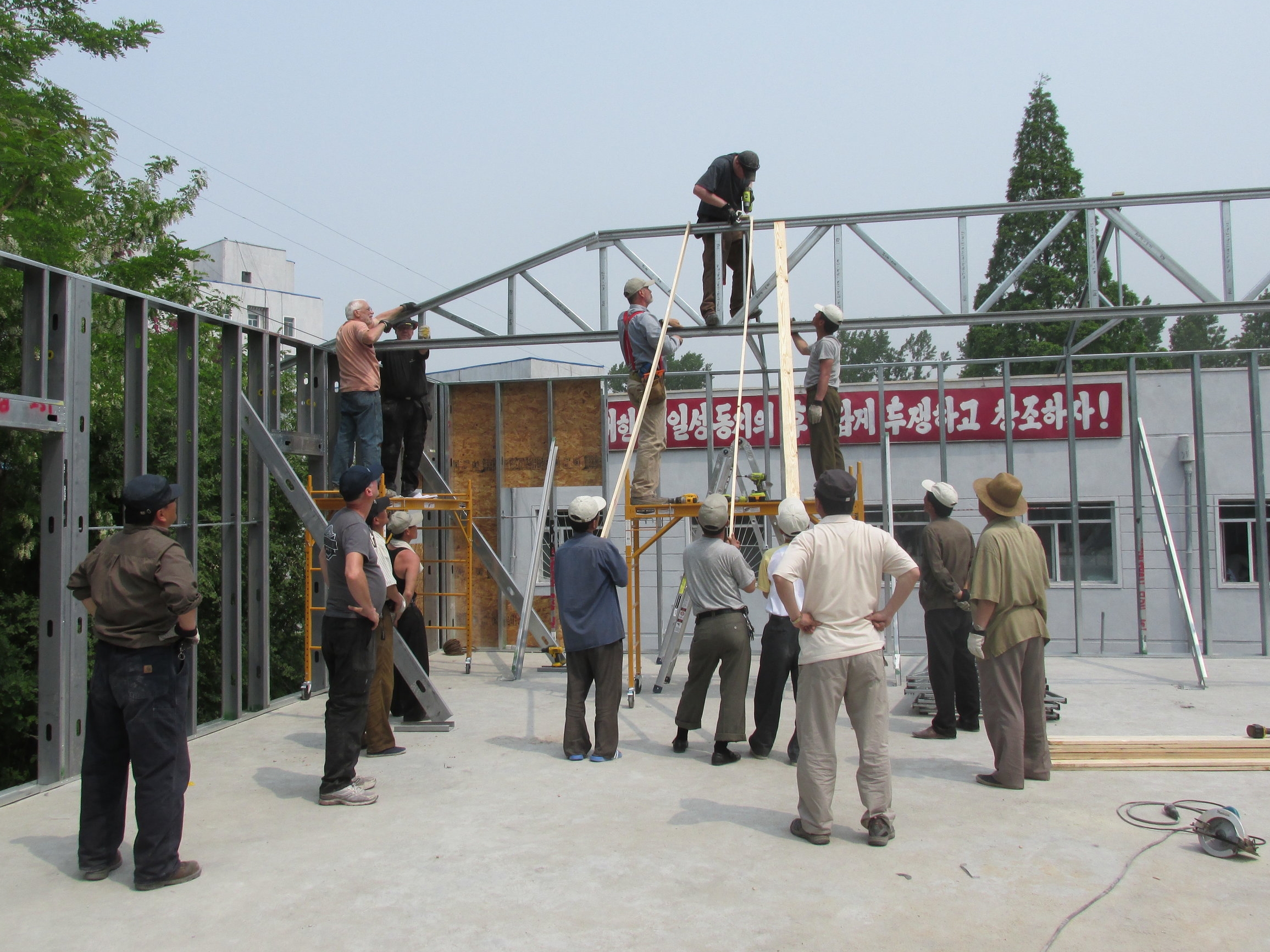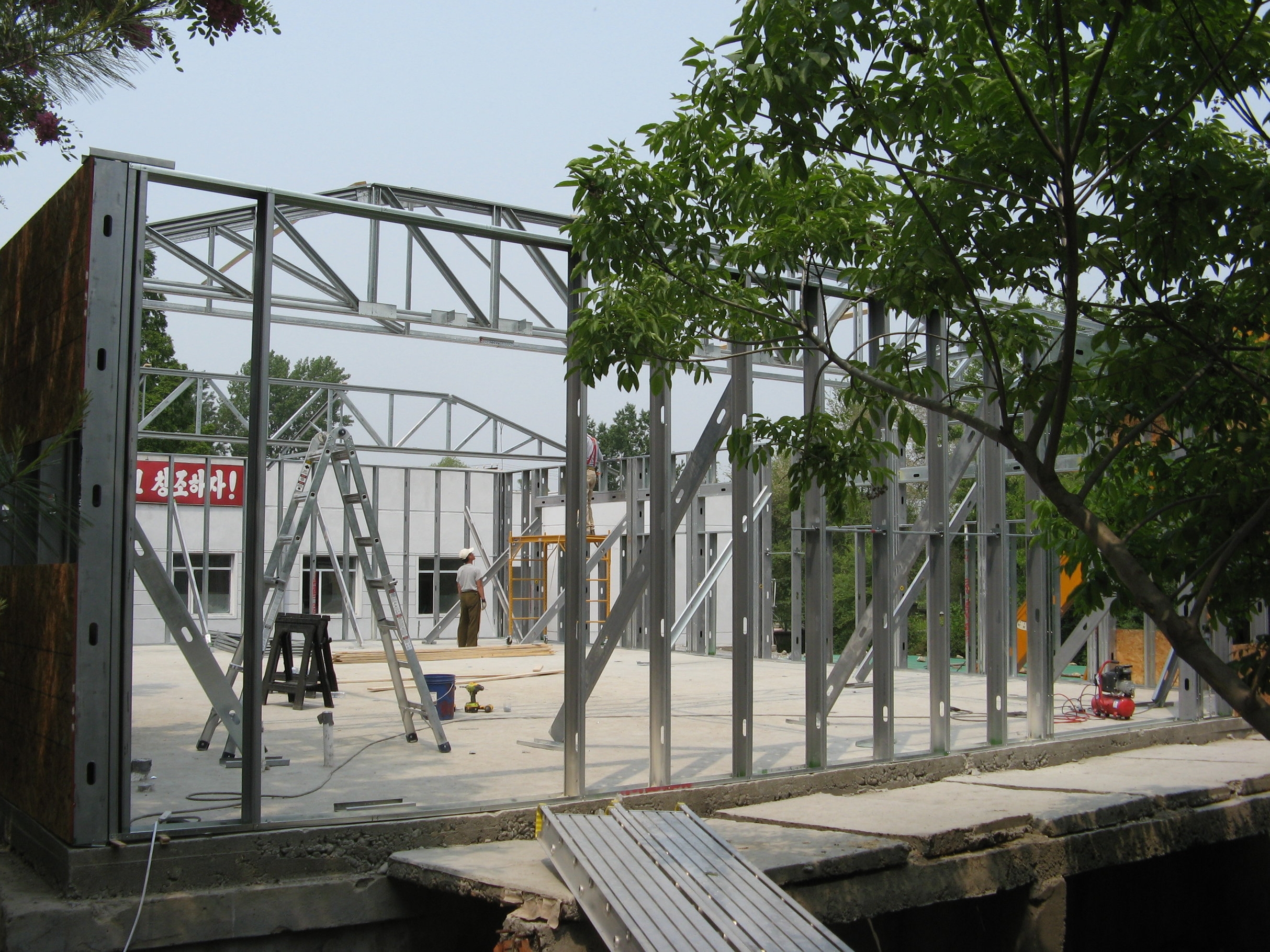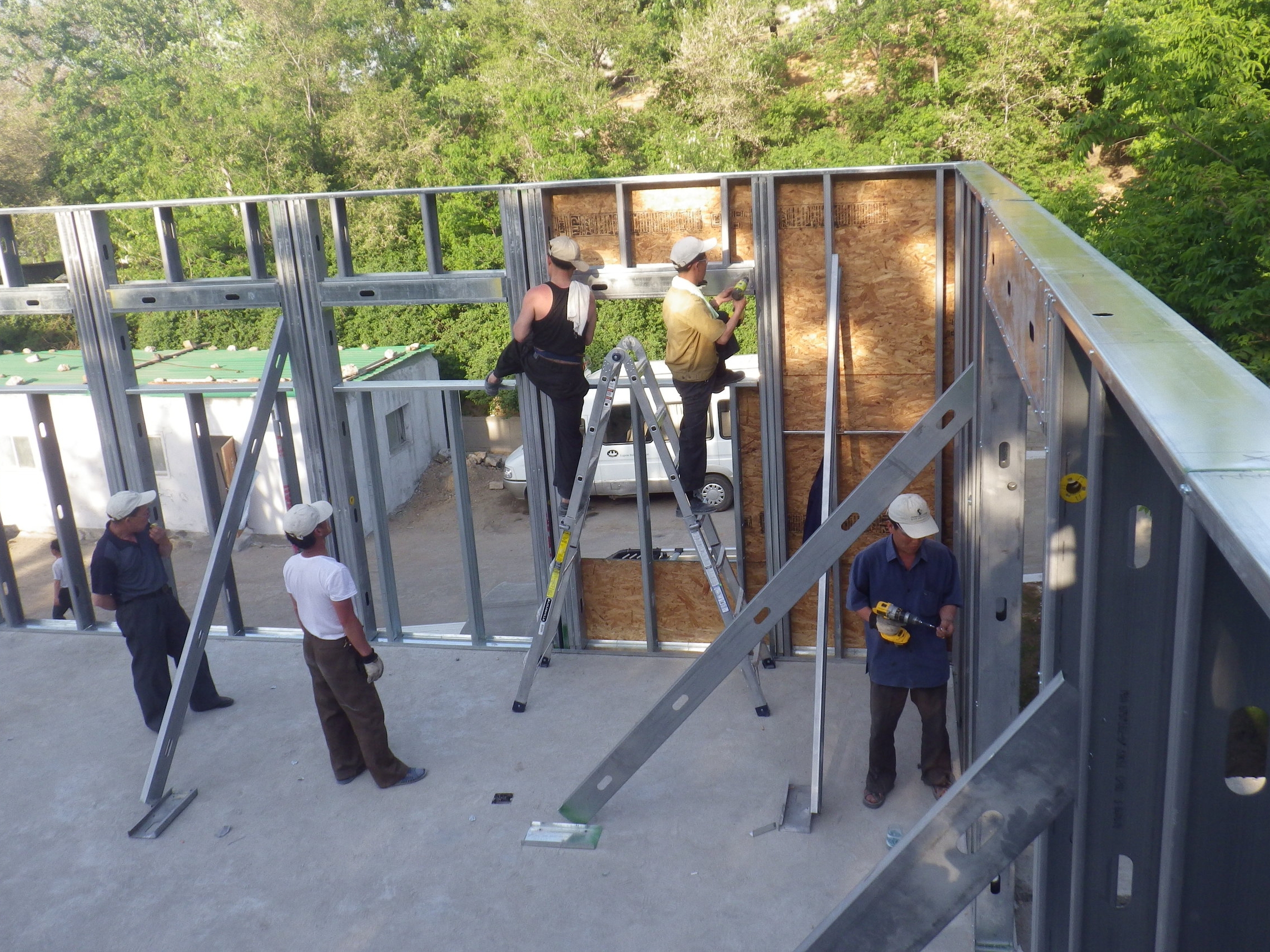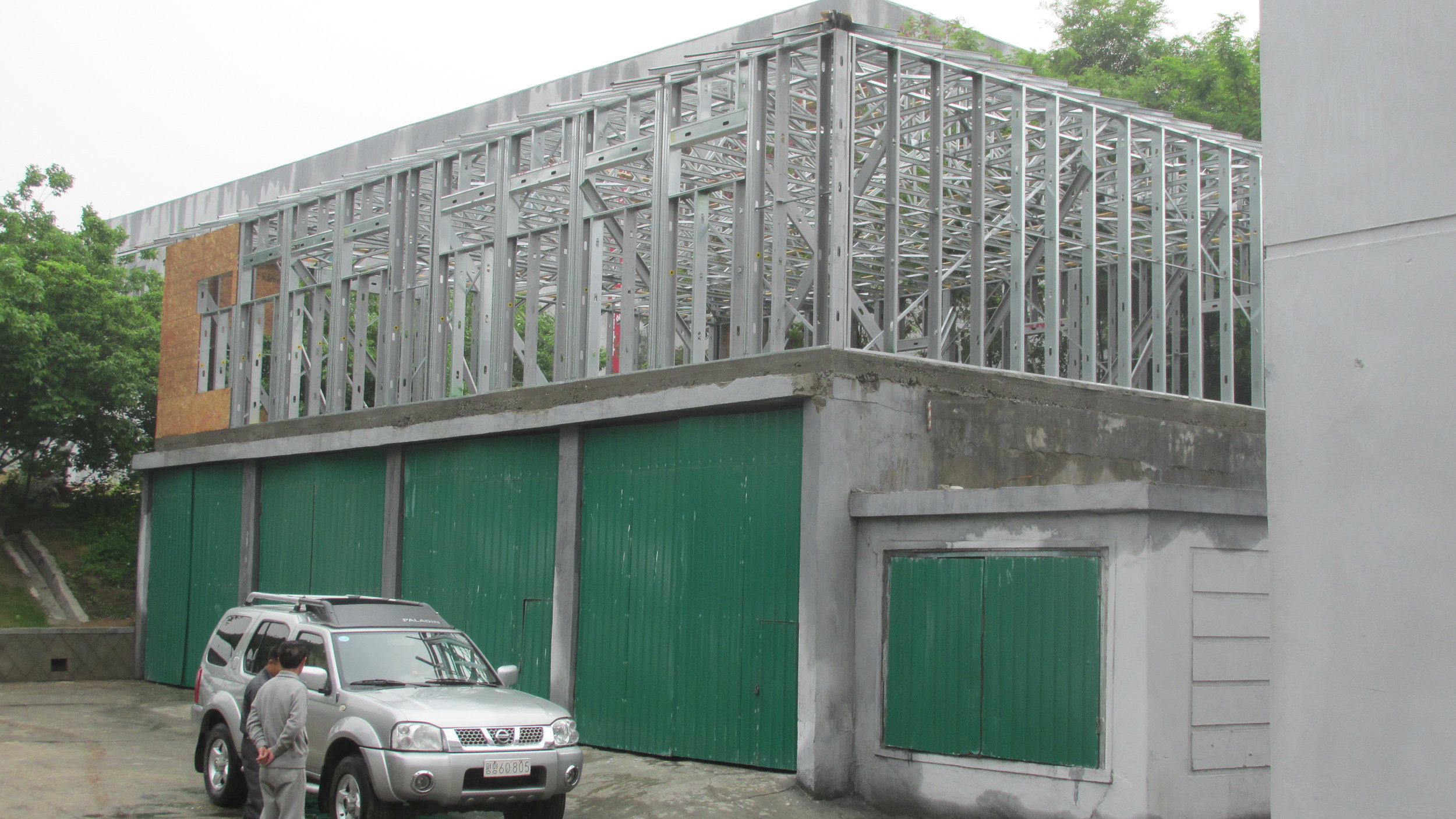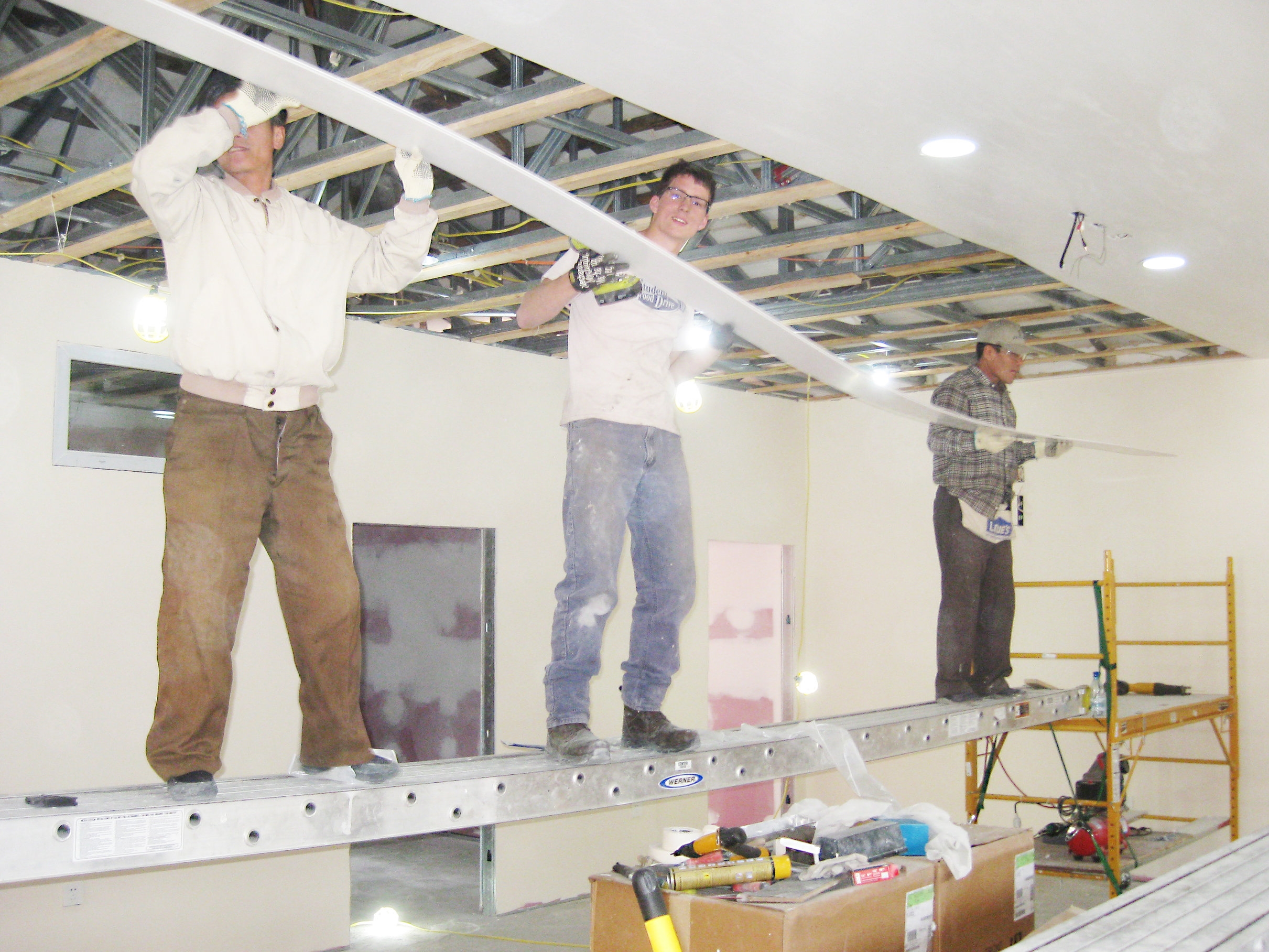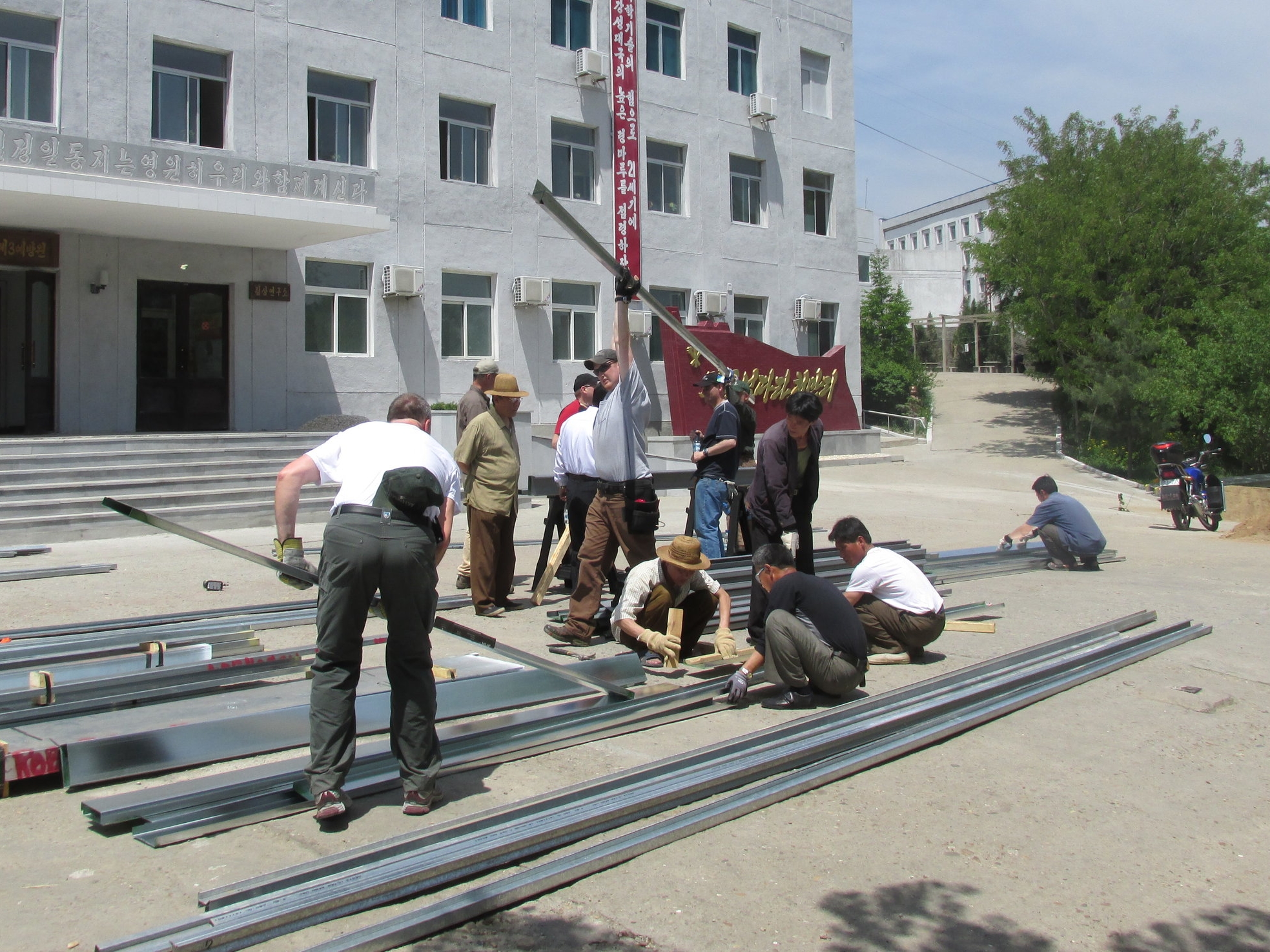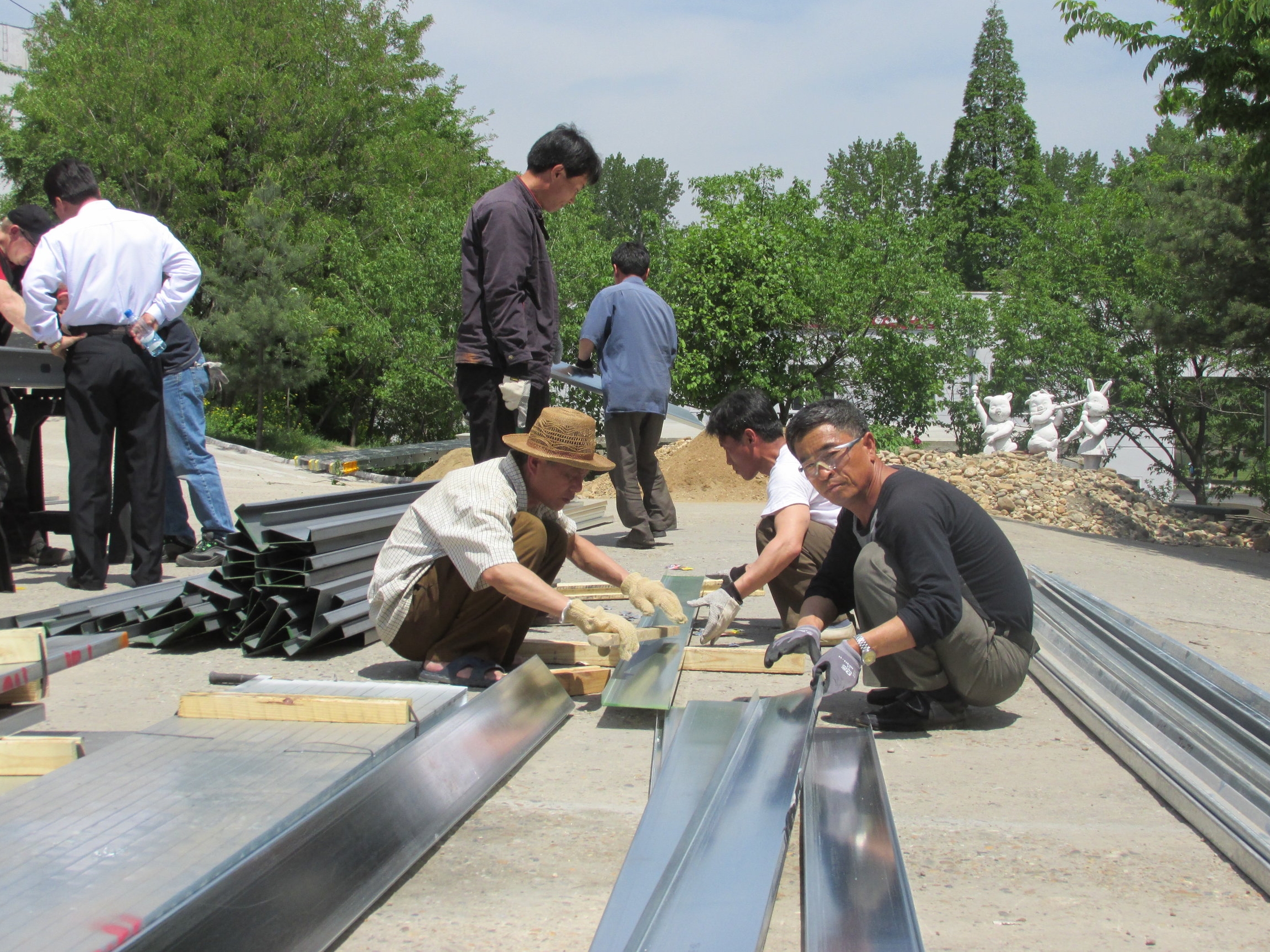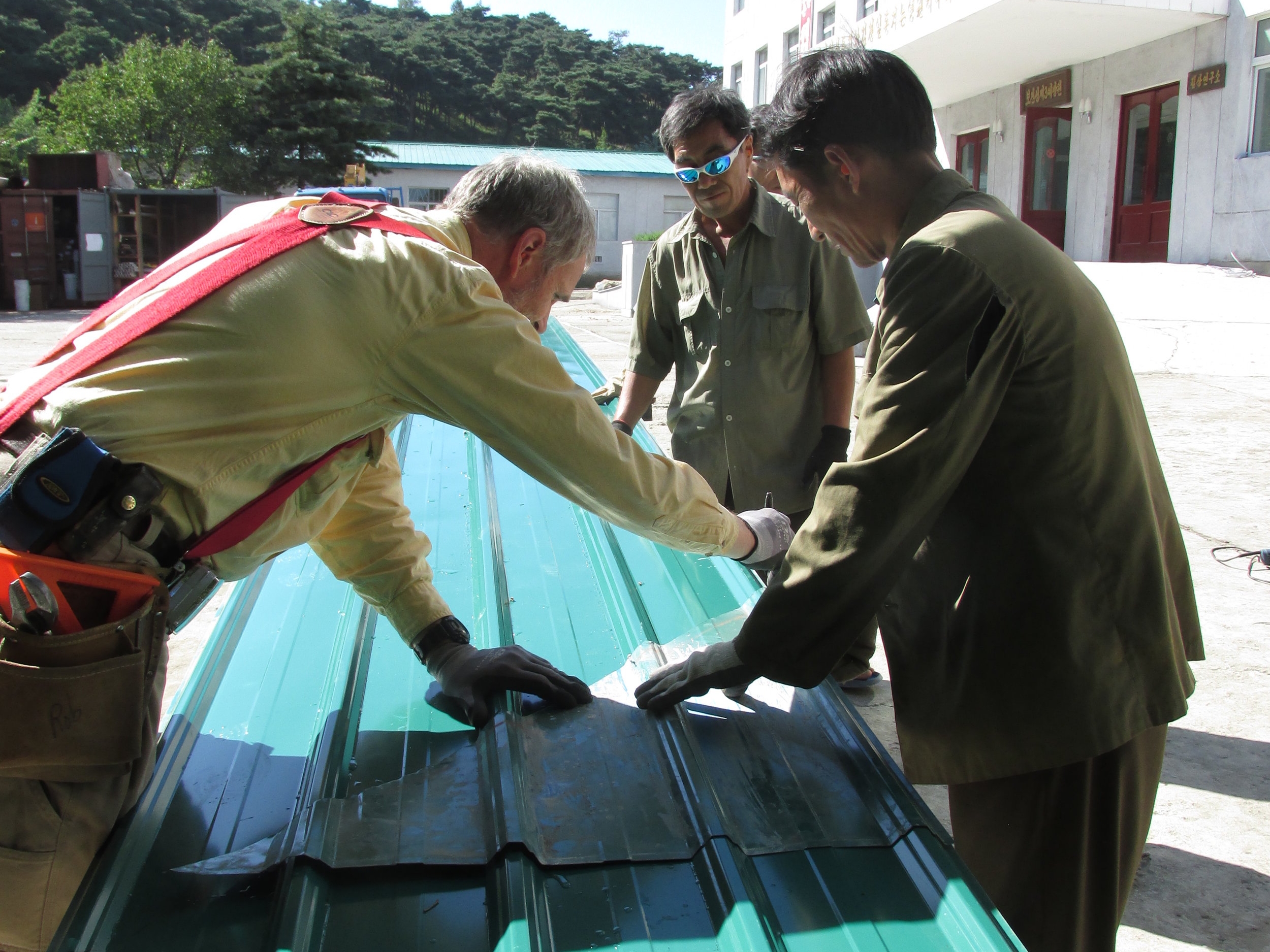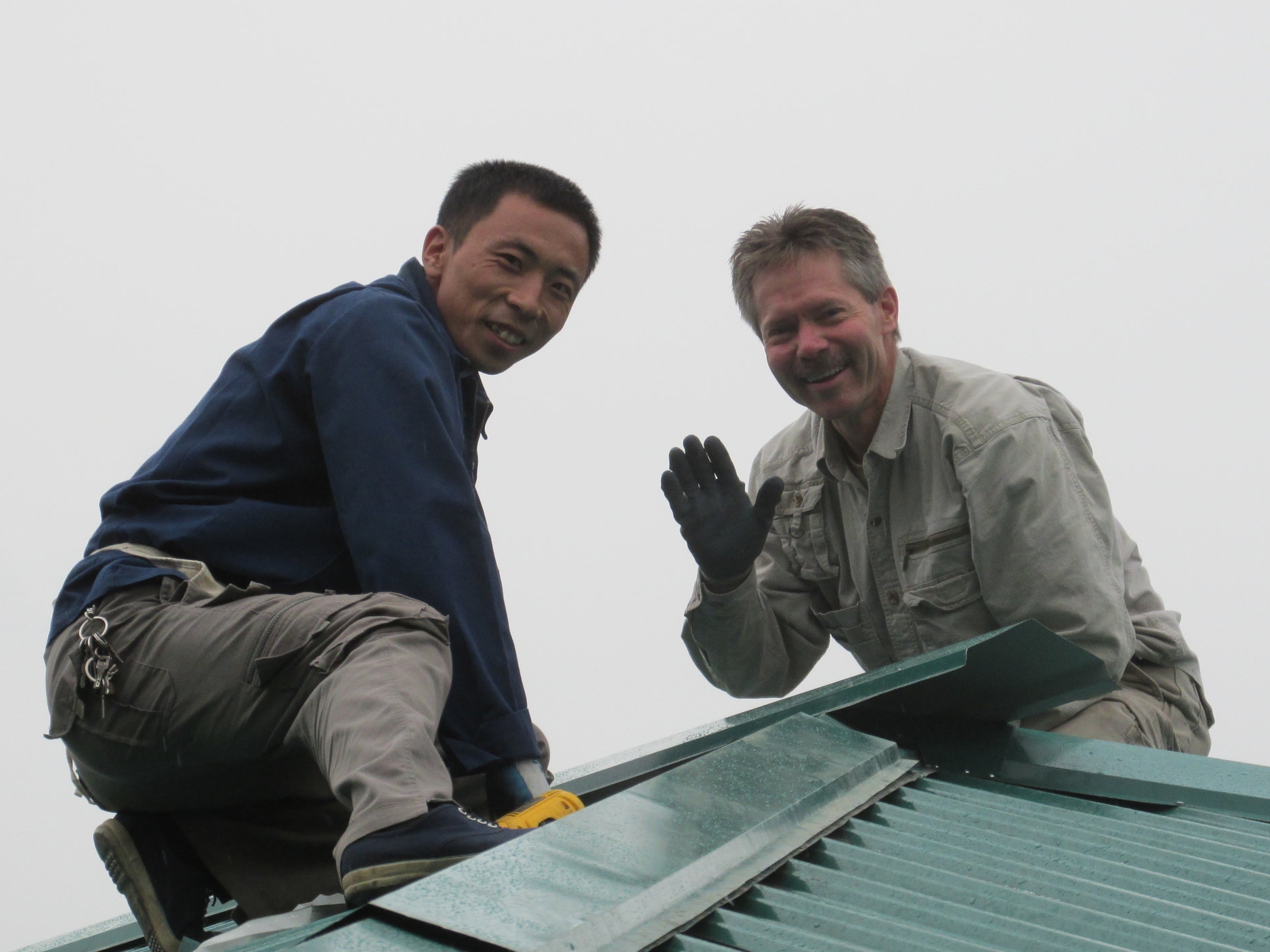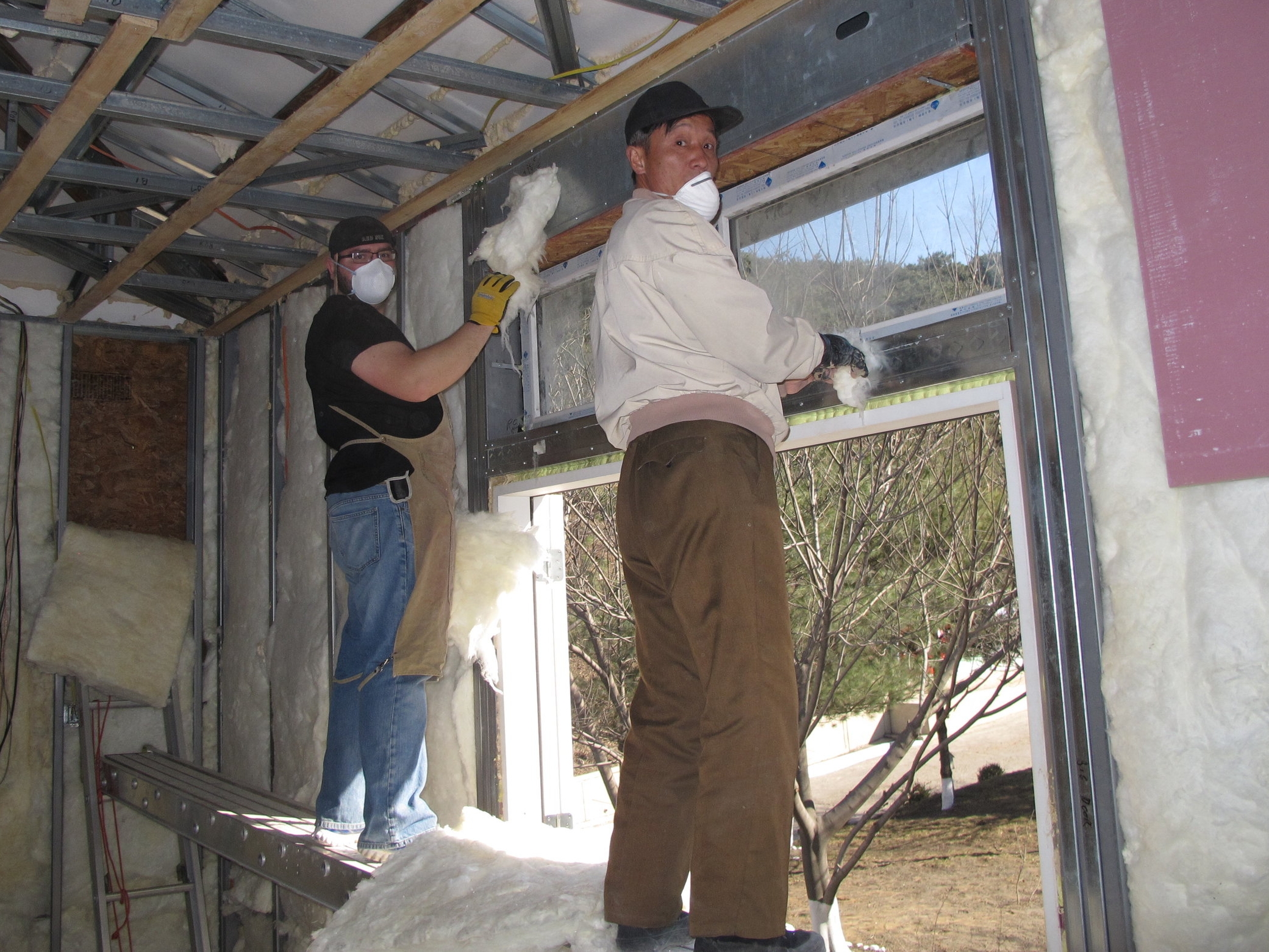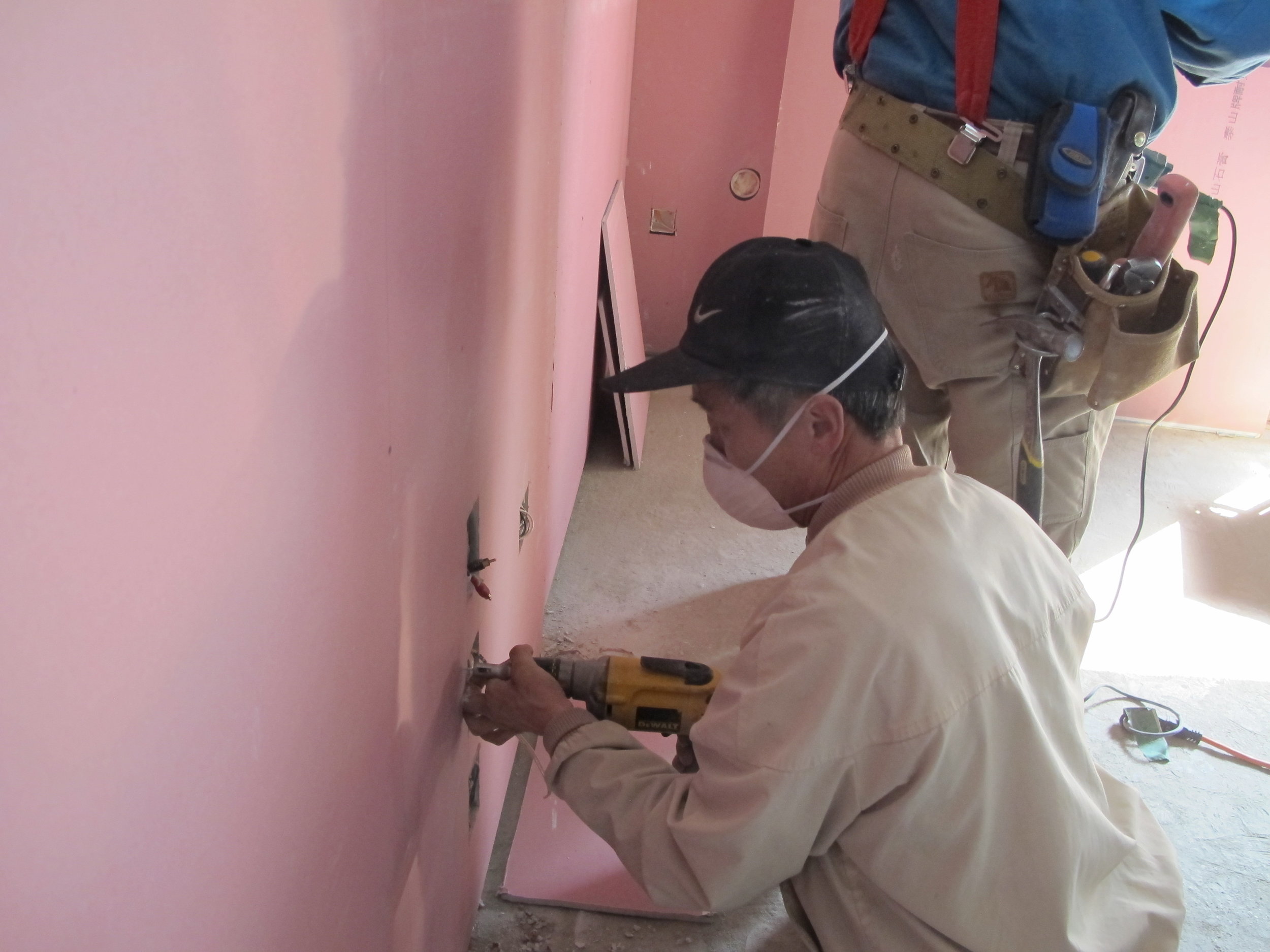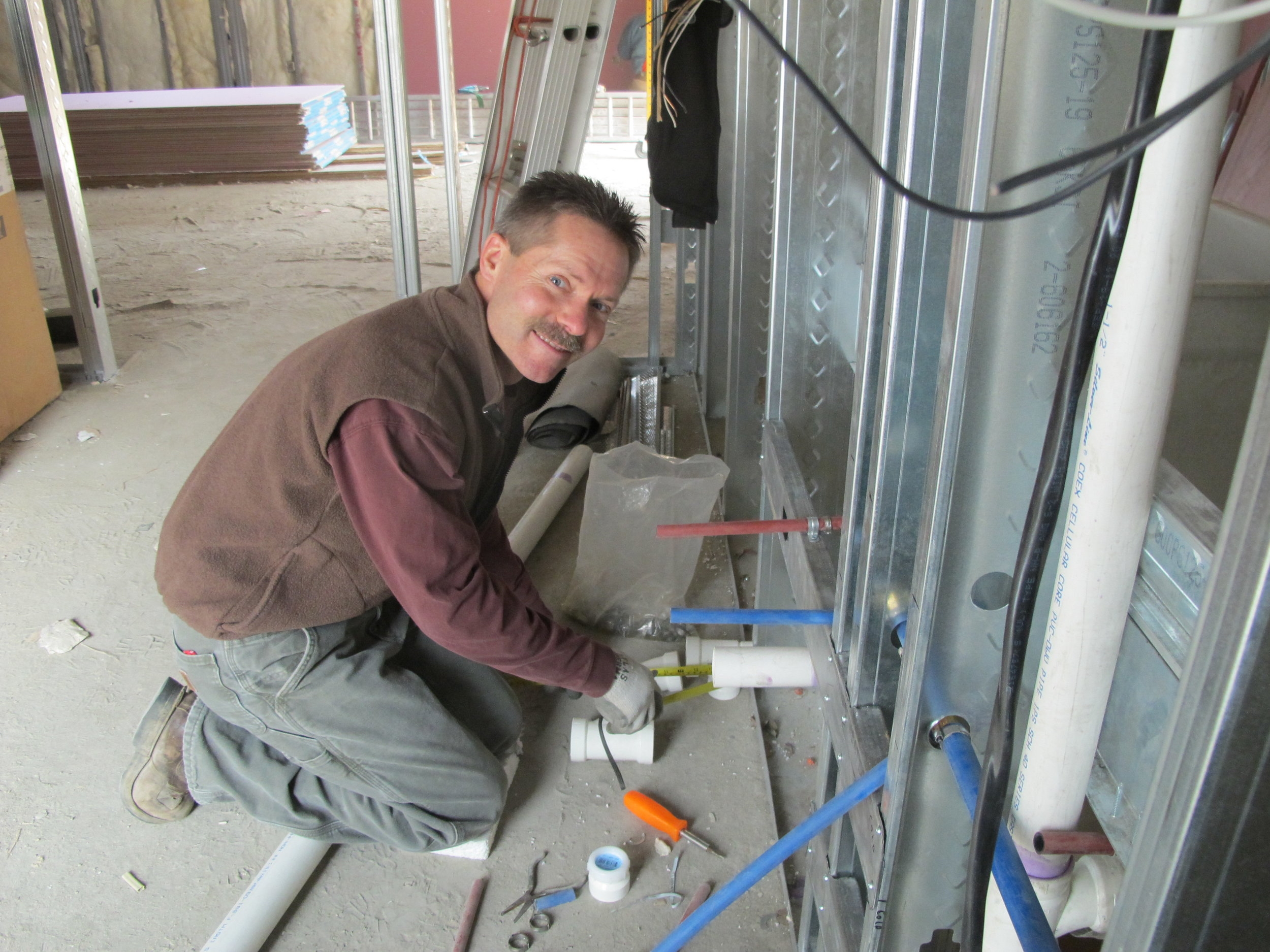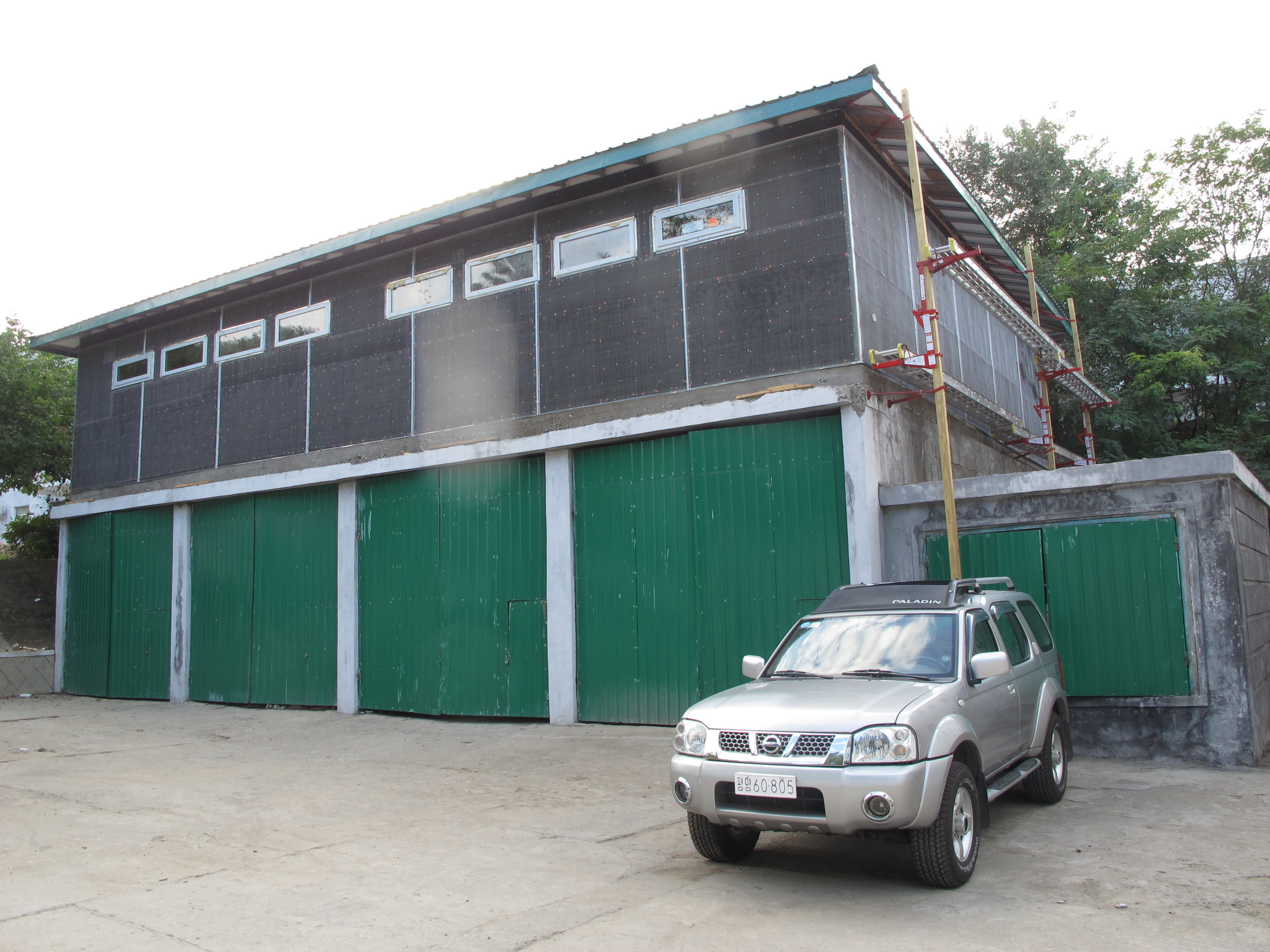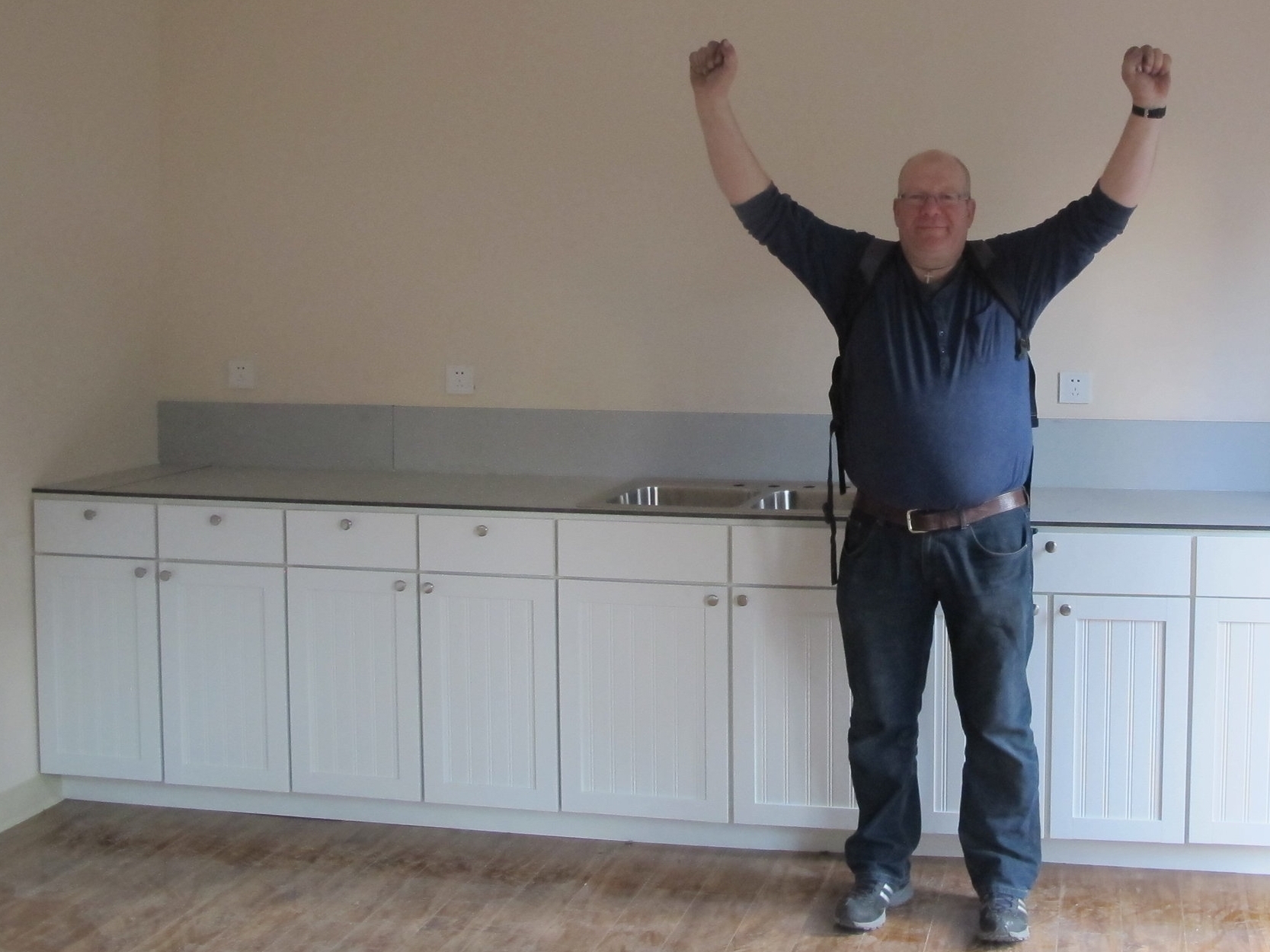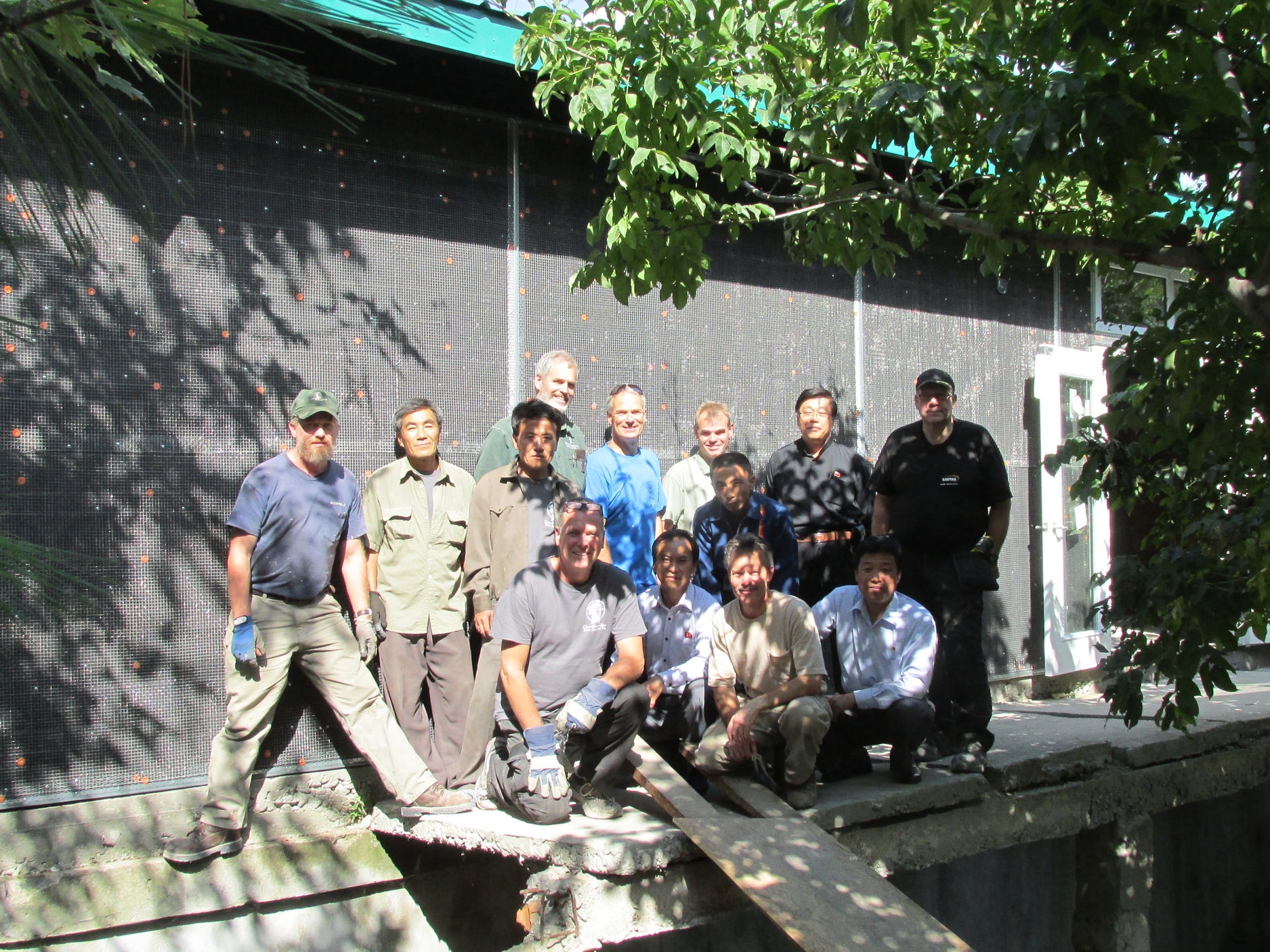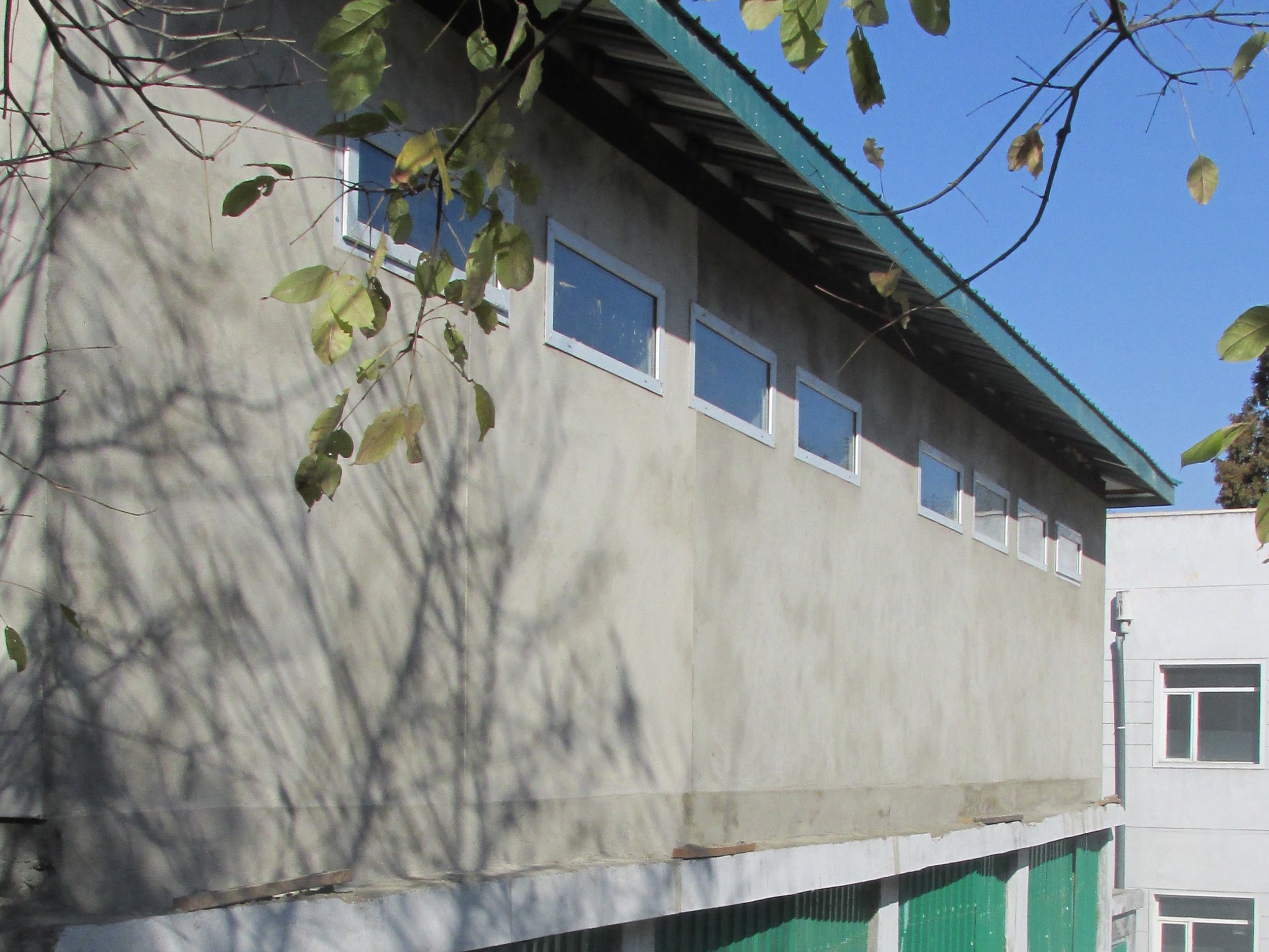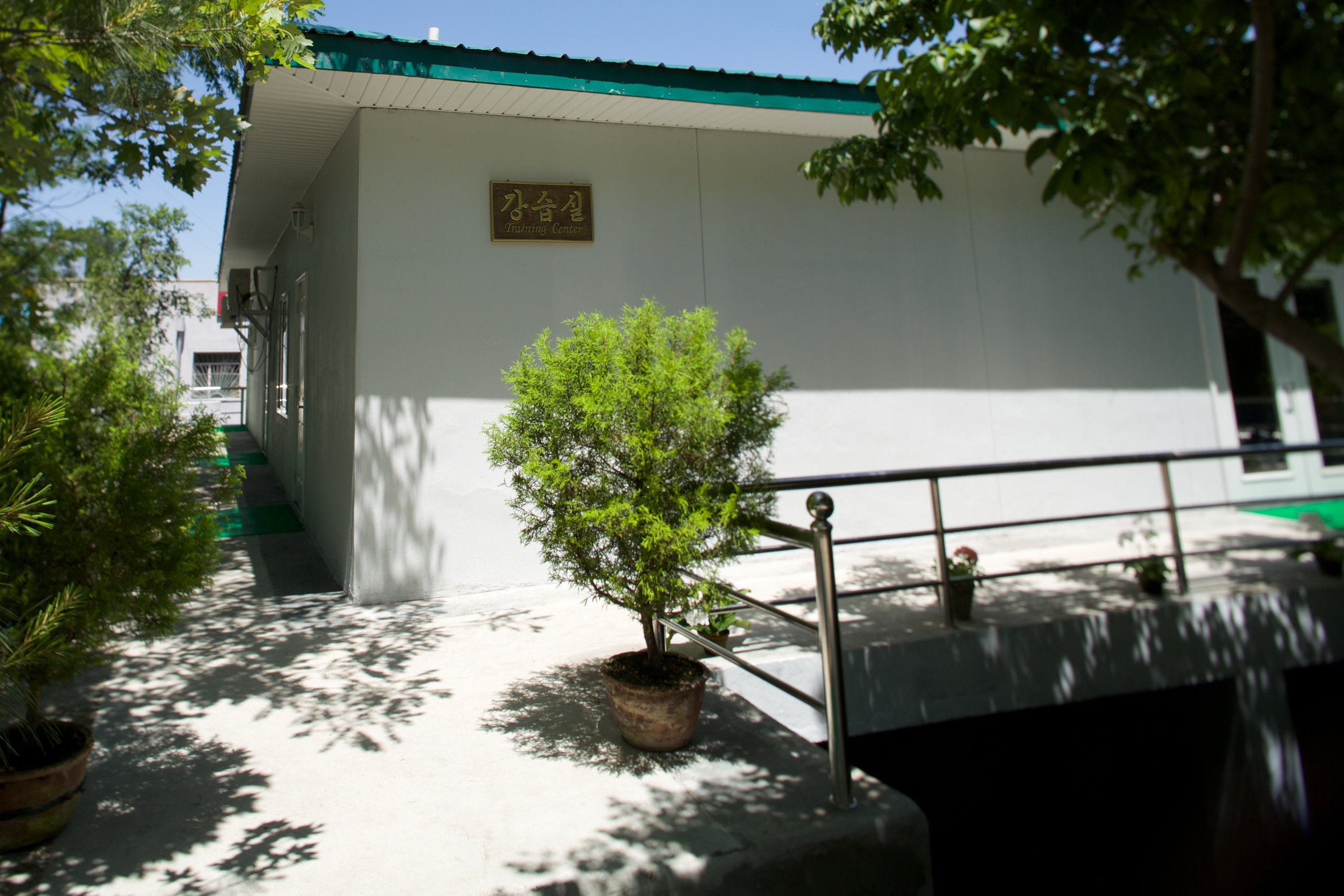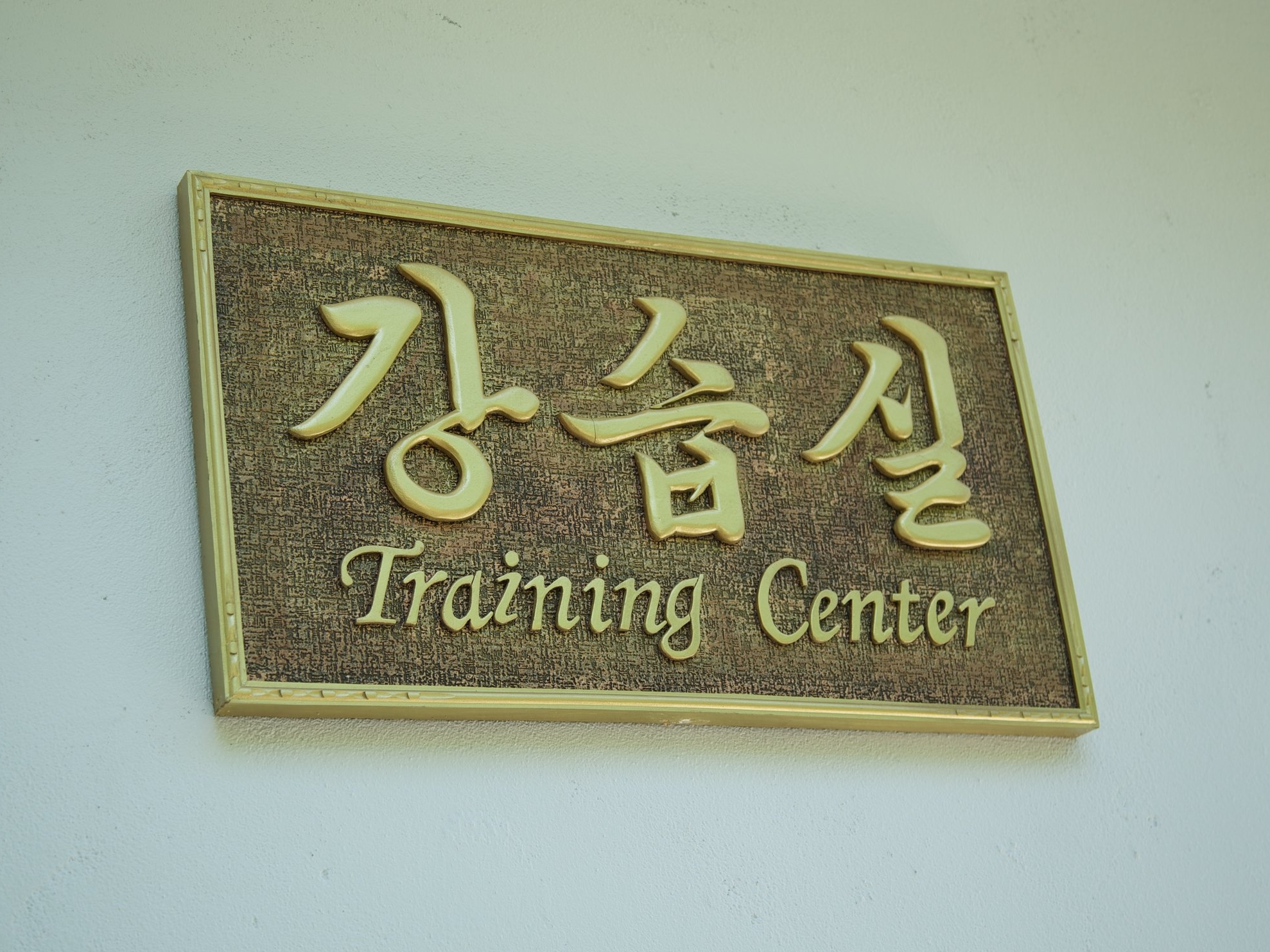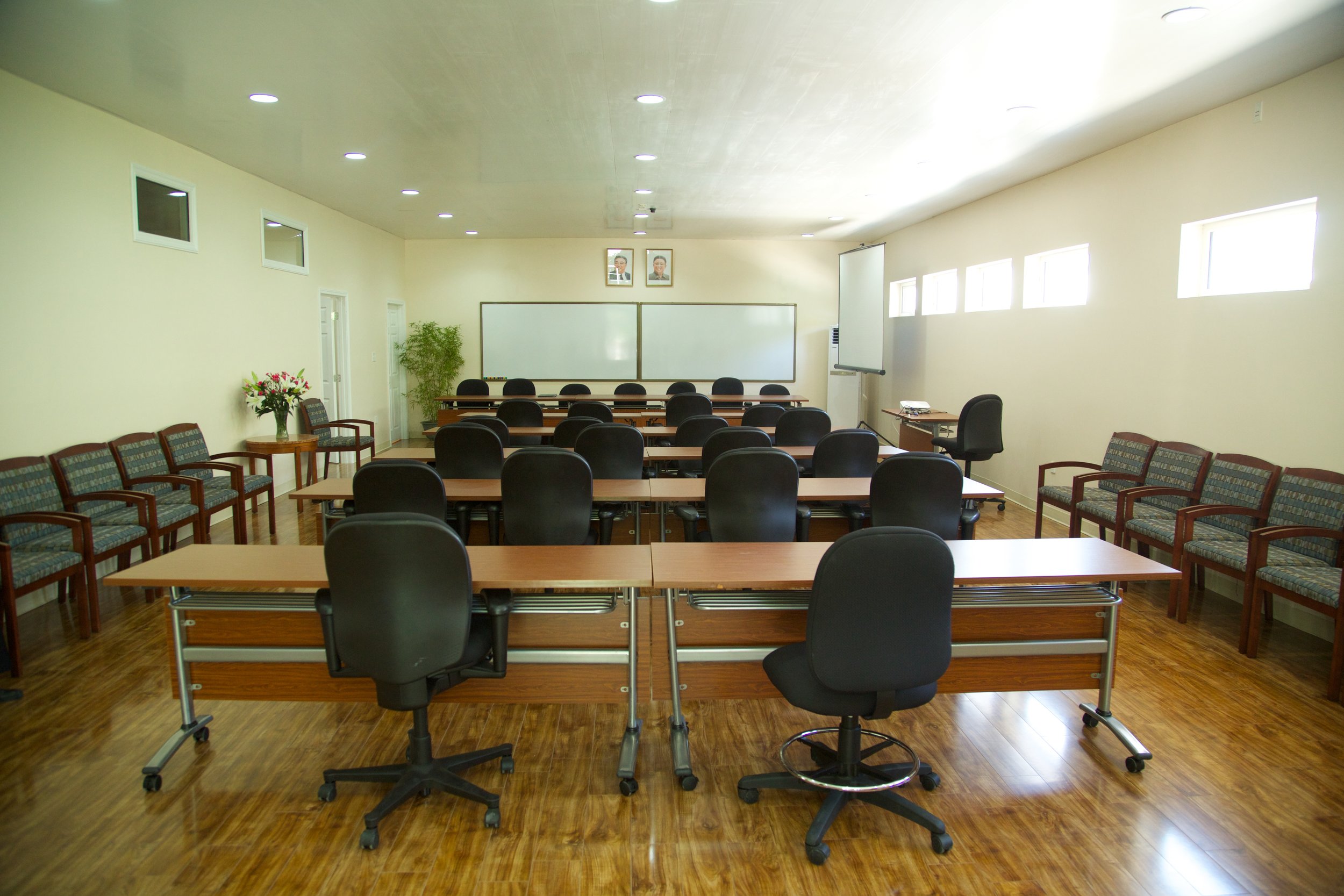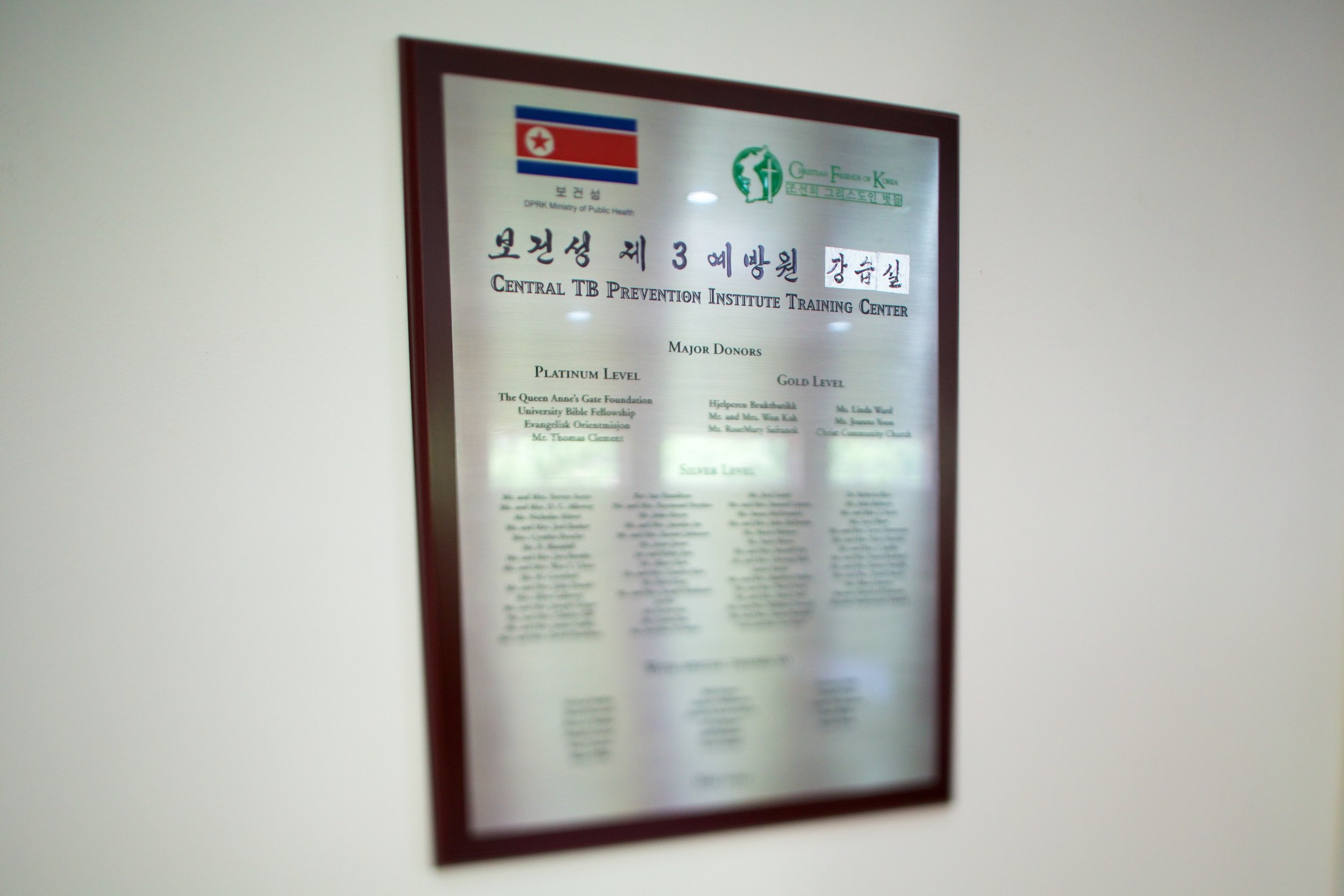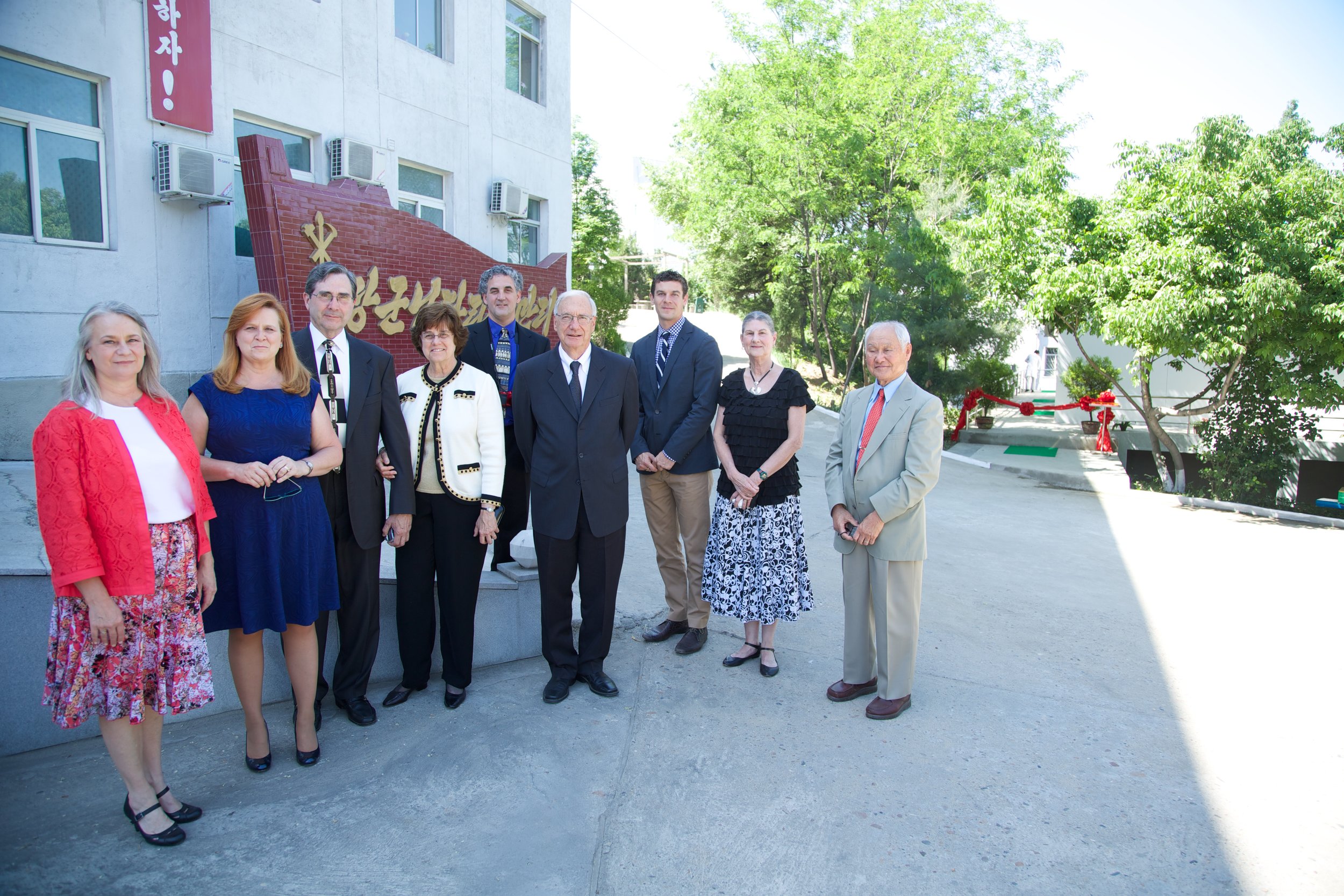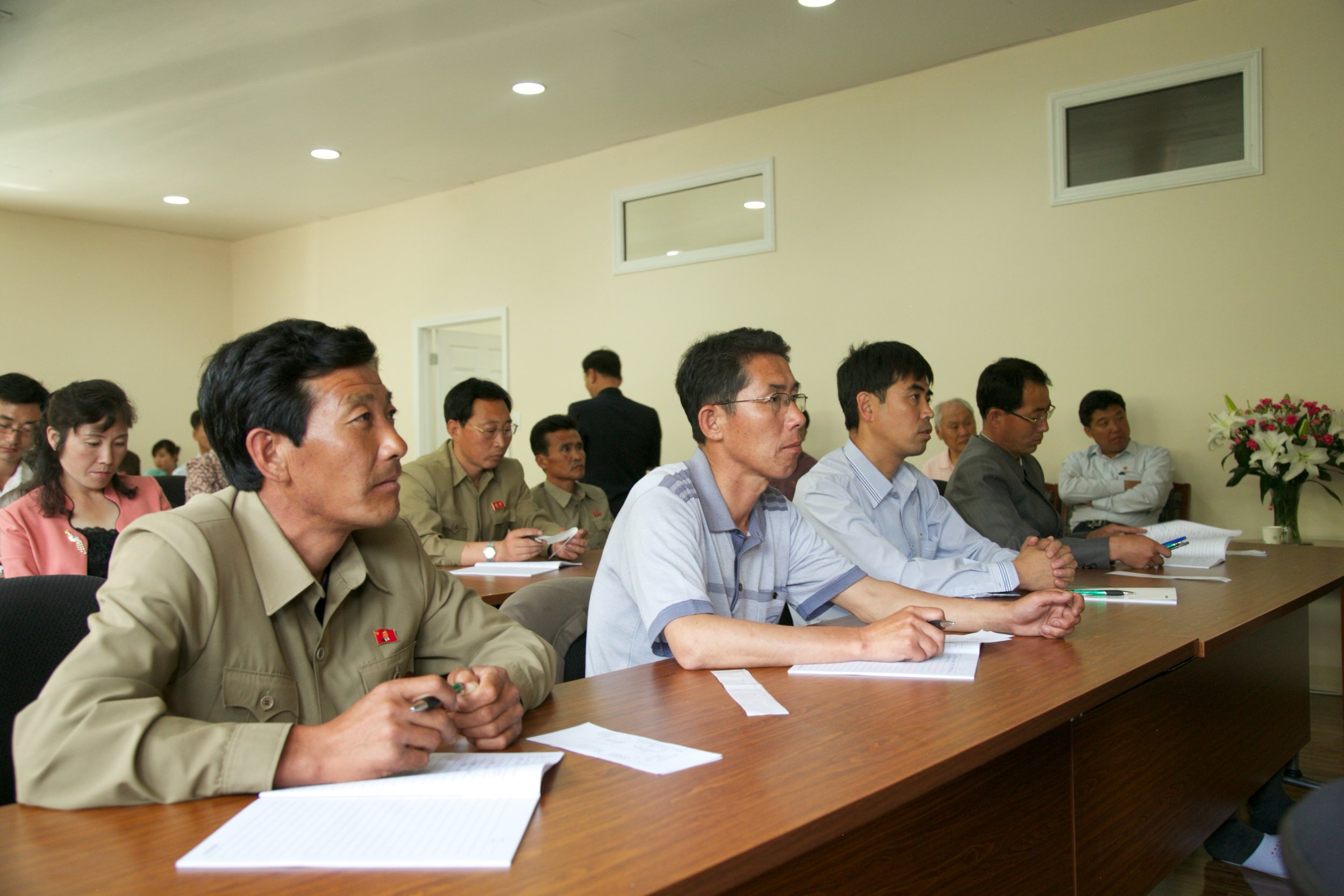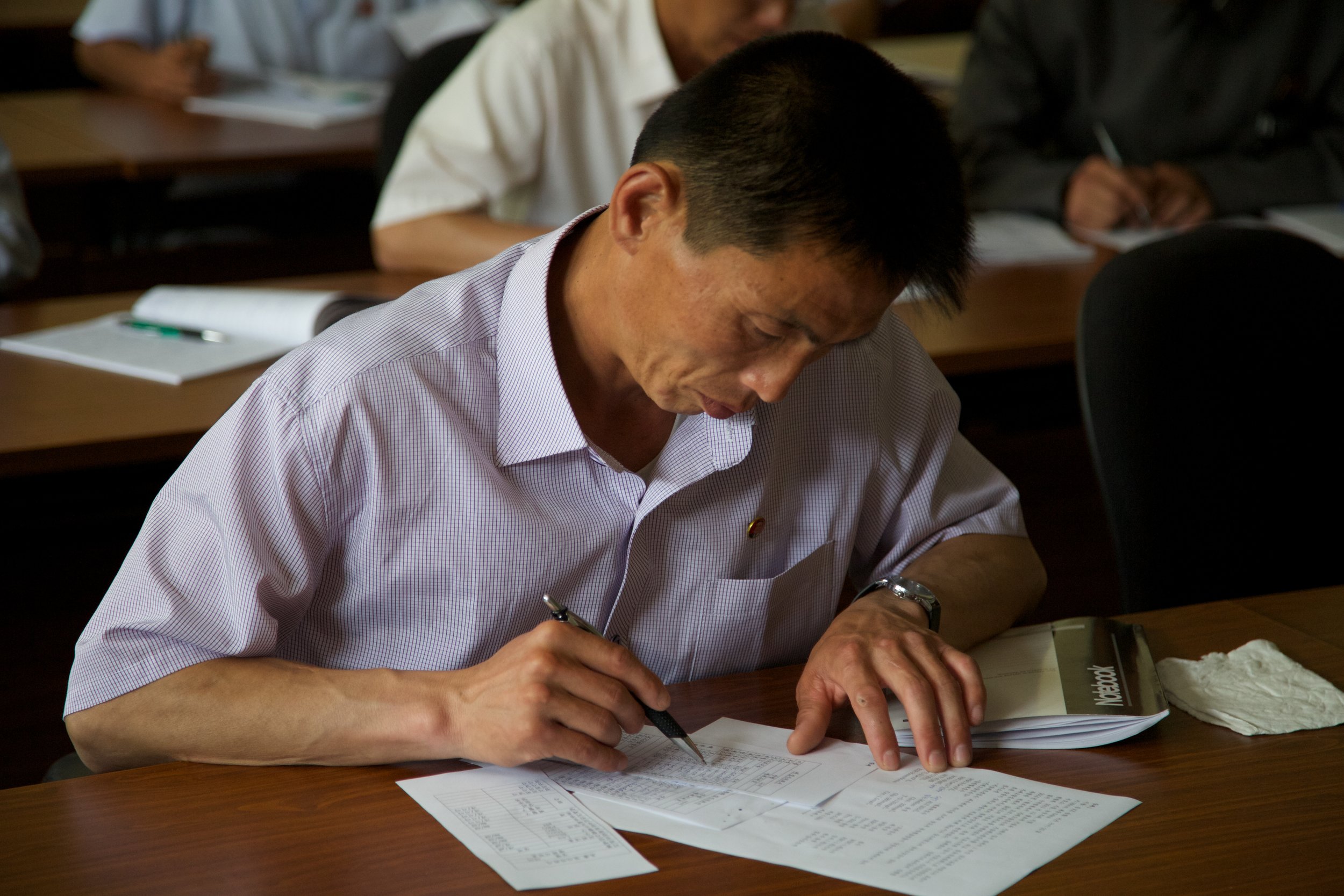By request of MoPH, CFK and Stanford University School of Medicine collaborated in 2008 to fully renovate and equip the first national reference-level TB laboratory located at Central #3 TB Prevention Hospital in Pyongyang.
National TB Reference Lab (NRL)
The NRL is located on the first floor of the Central #3 TB Hospital. The 2,600 square foot, 13 room, fully equipped TB and clinical lab was fully renovated and re-equipped by our teams in 2009–2010. Currently, the NRL has the ability to perform WHO-recommended diagnostics (florescent acid-fast microscopy, culture-based TB identification methods, drug susceptibility testing by conventional culture methods, and molecular testing using GeneXpert technology). Line probe assay technology was recently introduced.
Since our work began in 2009, this hospital and lab have undergone tremendous change. They are working towards becoming a center of excellence for national TB prevention and treatment efforts.
Ongoing Medical and Laboratory Training
Ongoing skills transfer has taken place at the lab for hospital staff on a regular, ongoing basis since 2009; highly trained external experts share their knowledge and skills with local staff. Once proficiency and competency are attained, the lab will be able to implement national surveillance programs for both TB and MDR-TB, properly diagnose and monitor MDR-TB patients under treatment, and perform national drug resistance and prevalence surveys.
Hematology and Chemistry Training
Dr. Marcia Kilsby (Medical Initiatives Director of Global Care Partners and Professor Emeritus of Andrews University) established the clinical chemistry and hematology lab at the NRL and has been engaged in ongoing skills transfer for staff. This lab has also been central in jump starting the diagnostic services for the HOPE (hepatitis B treatment) program.
Operation Room Renovations and greenhouse
In 2011, our teams worked side-by-side with local staff to completely renovate and re-equip the operating theater at the Central TB Hospital. We also constructed a large passive-solar greenhouse which has expanded food production year-round, especially during the cold winter months.
Training Center
New development brought an expanded need for training at this central level hospital to improve national TB prevention and treatment efforts. We were asked to build a second story onto an existing building to provide additional space needed to support training activities. In 2013-2014, we constructed the training center.
The training center provides physical space for expanded opportunities for health care staff to treat TB and hepatitis patients. We have held training workshops on multiple occasions at the center, and they are used regularly for a wide range of training activities and partner meetings. Ongoing downstream training is scheduled year round.
“The Lord works righteousness and justice to all the oppressed.”


